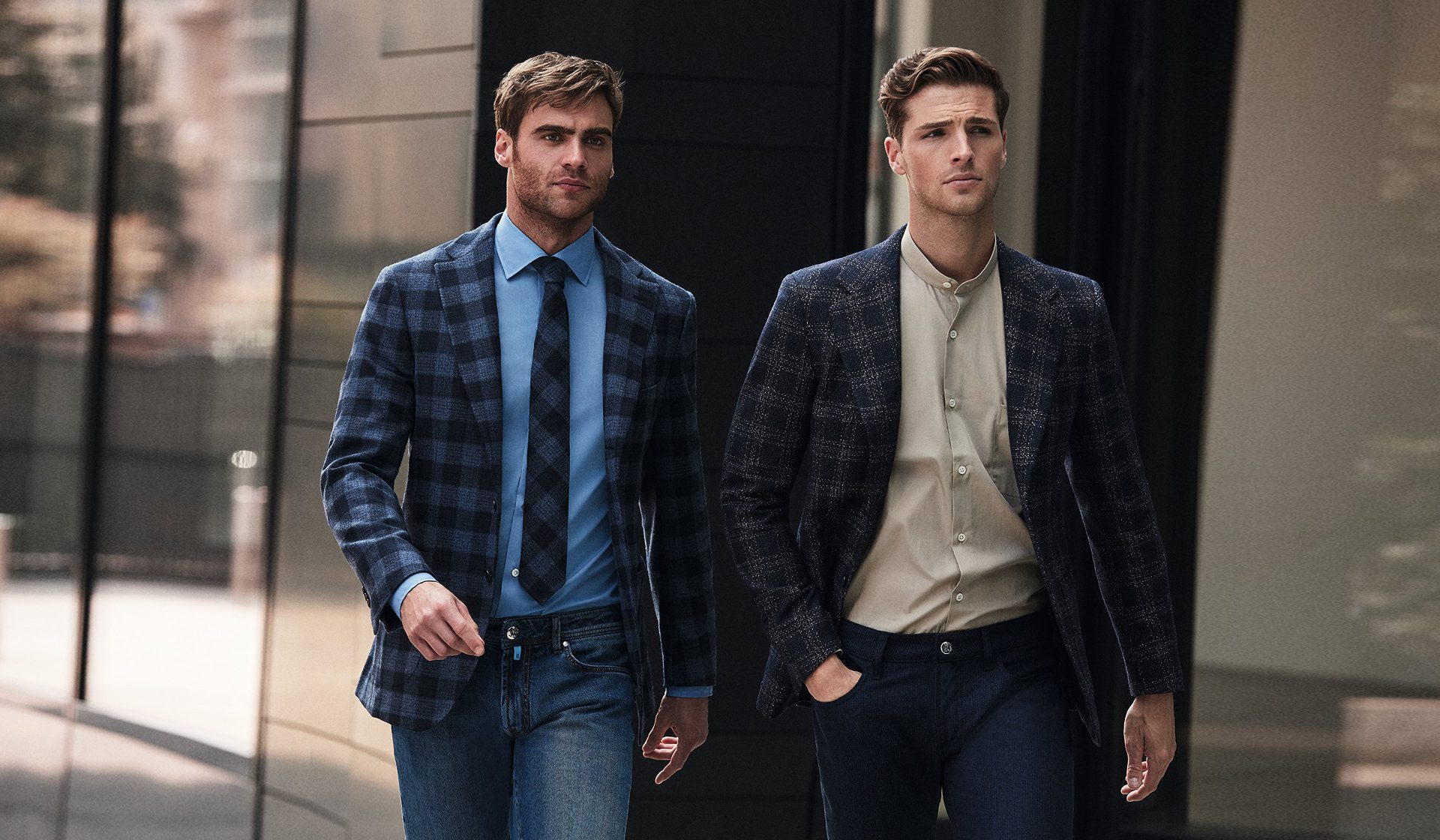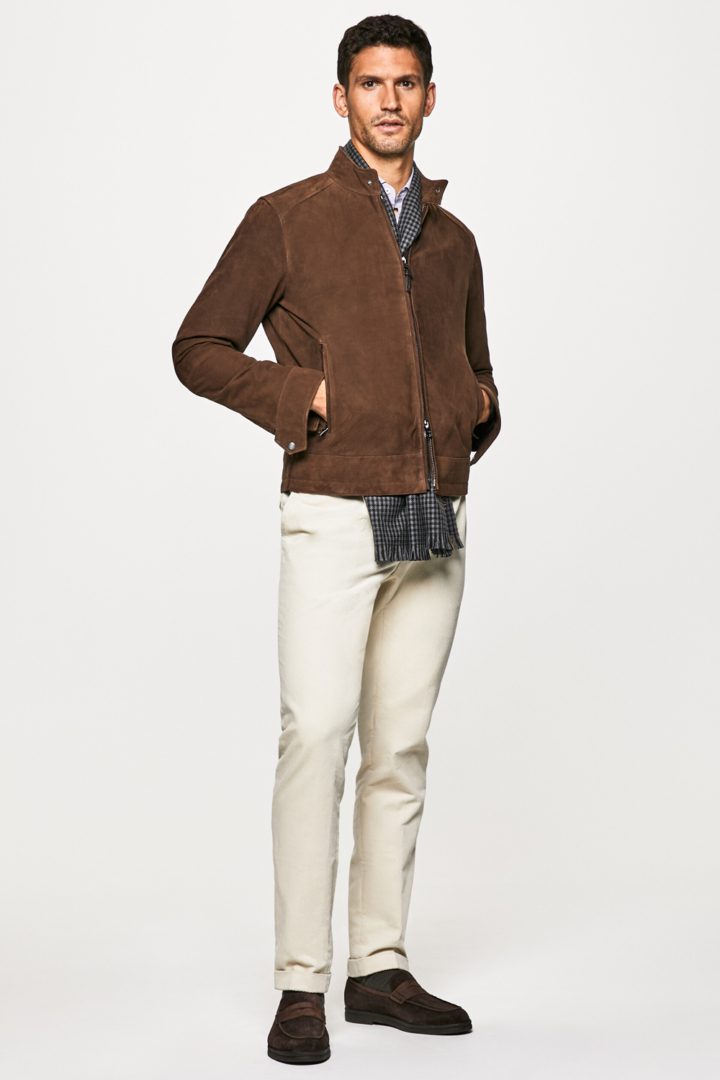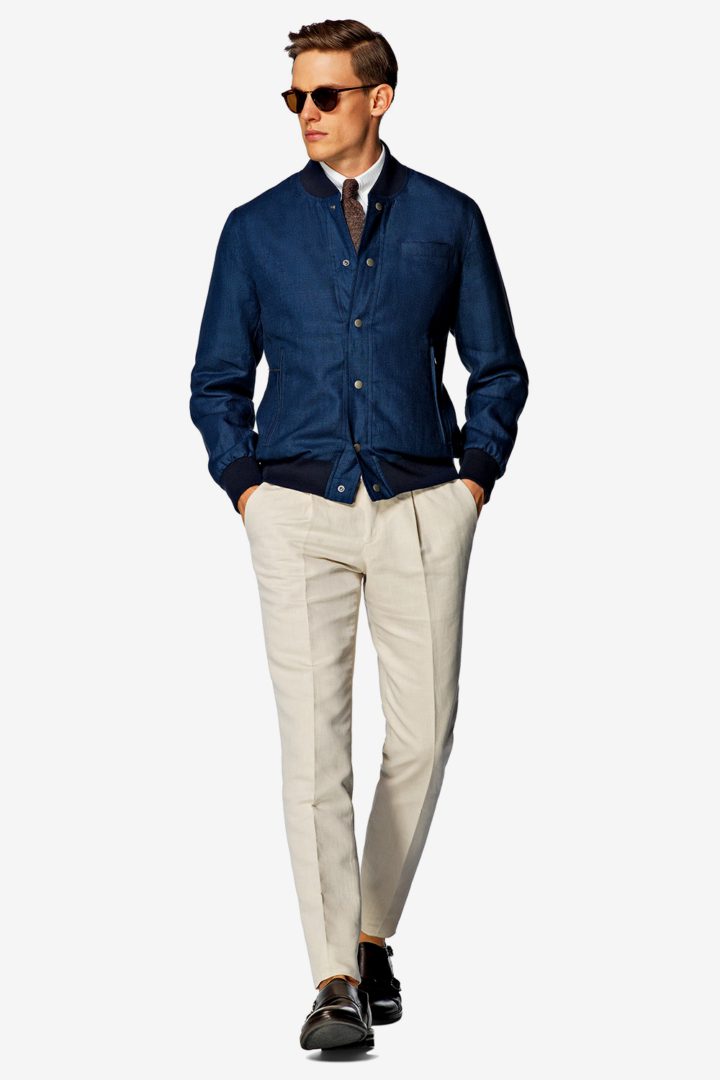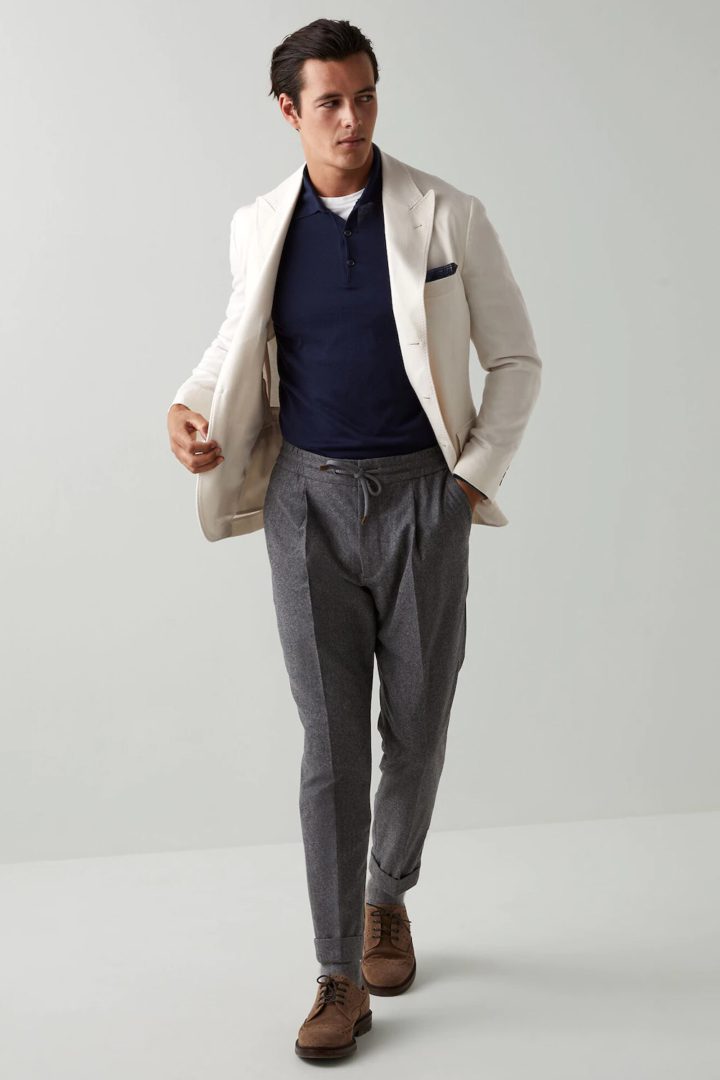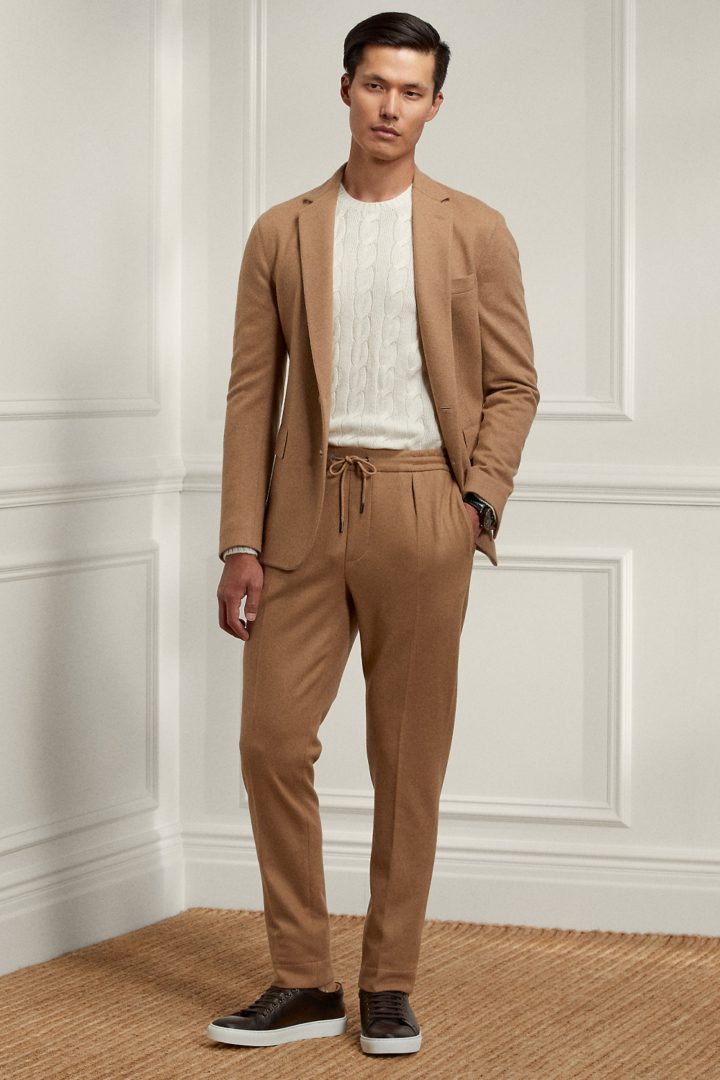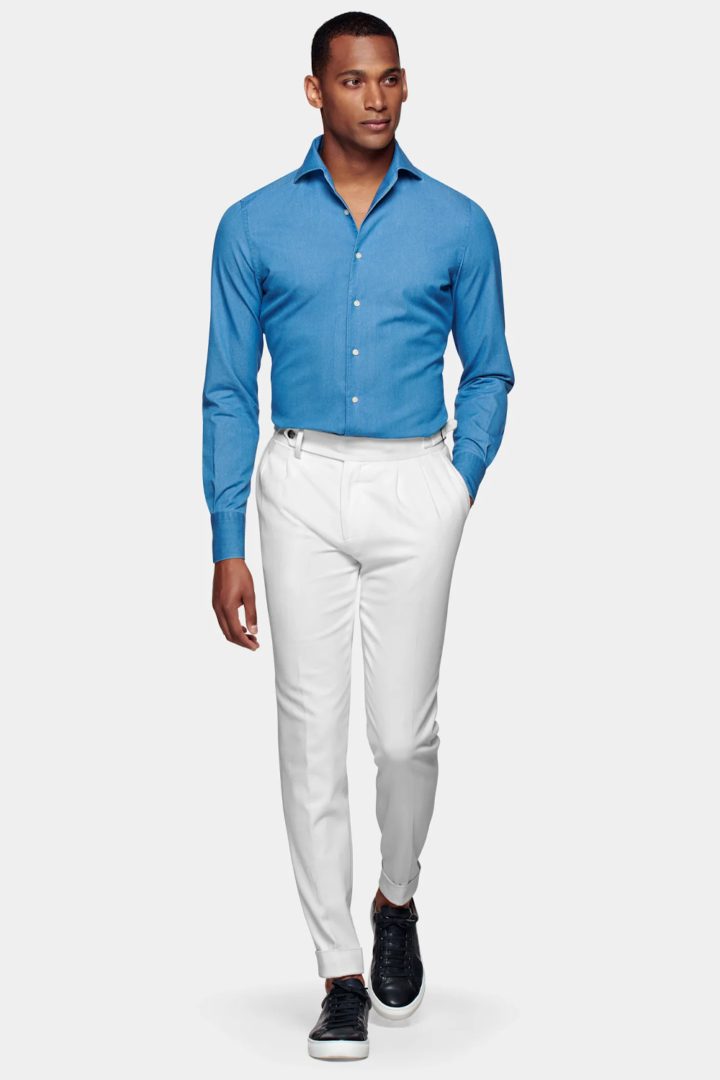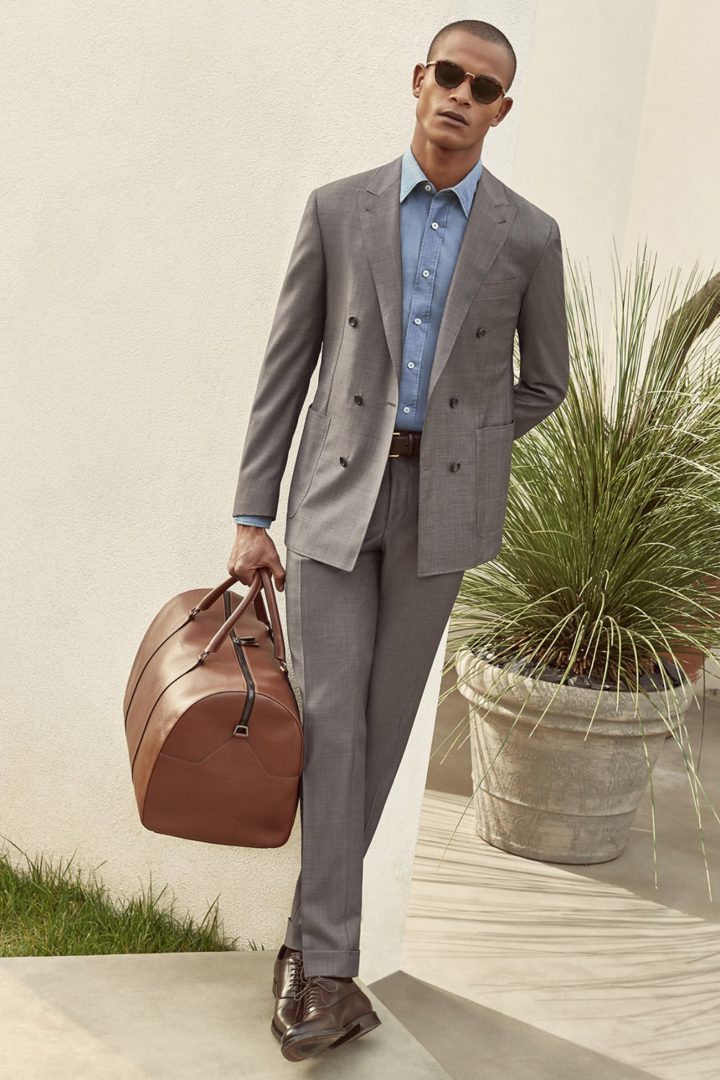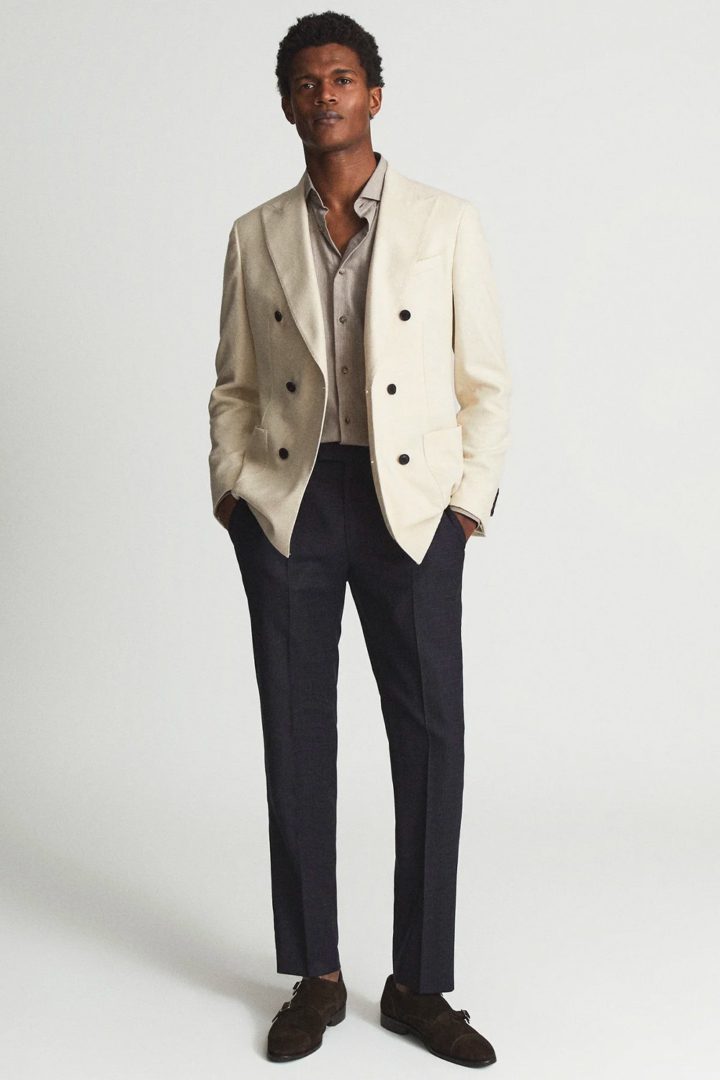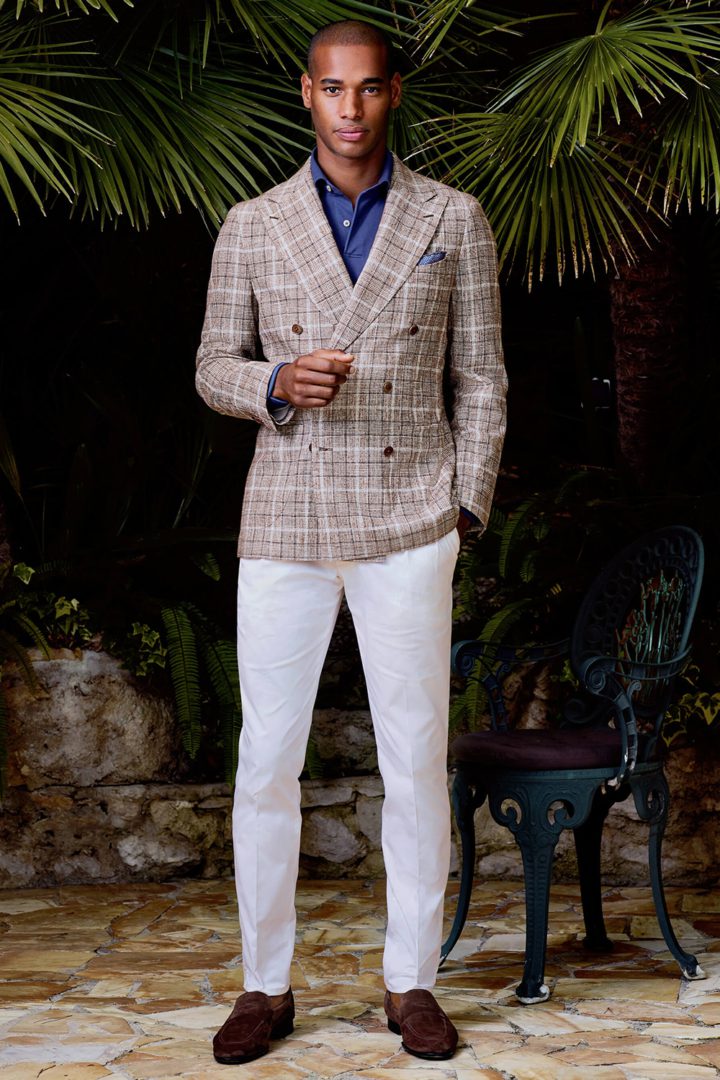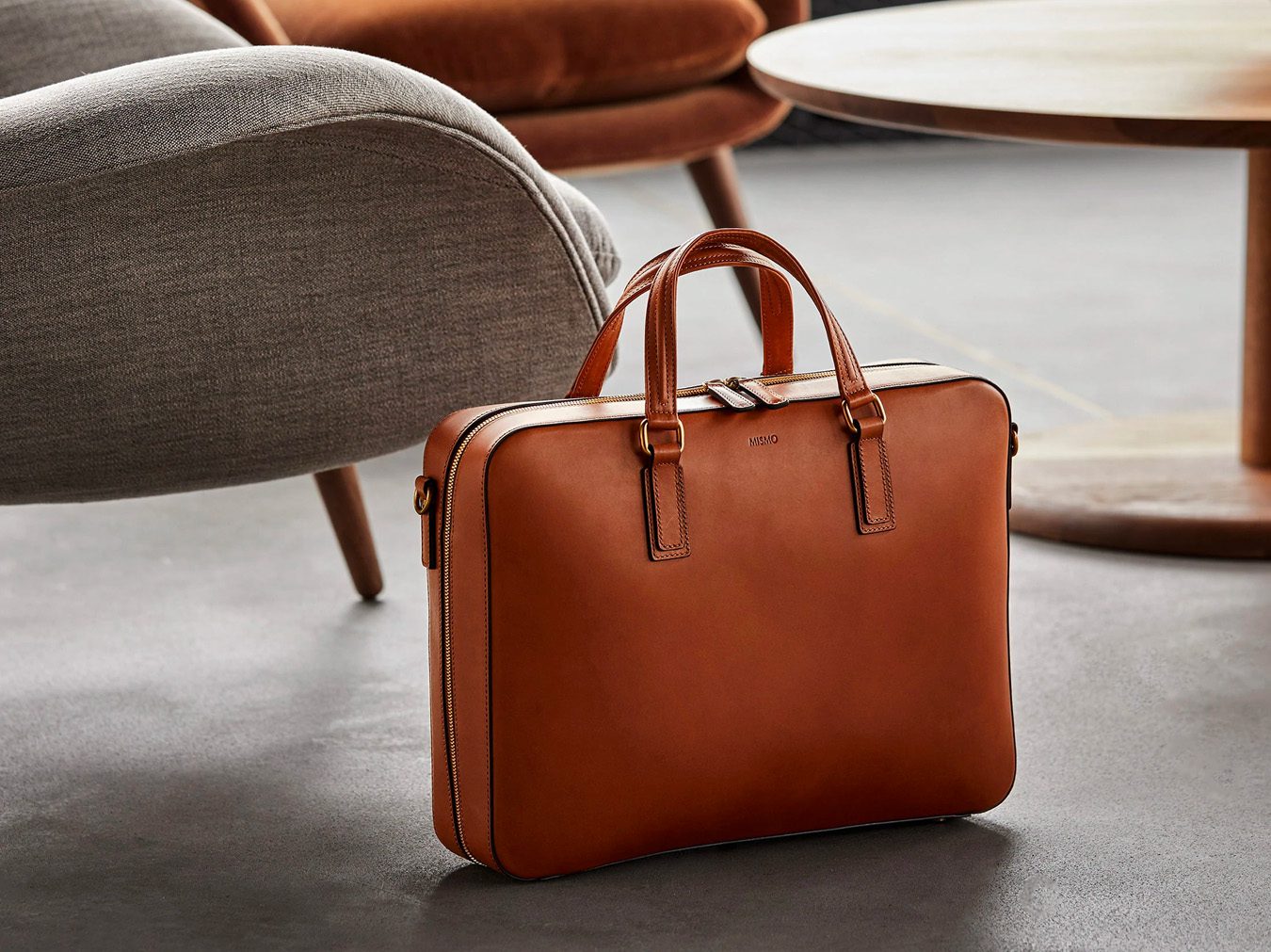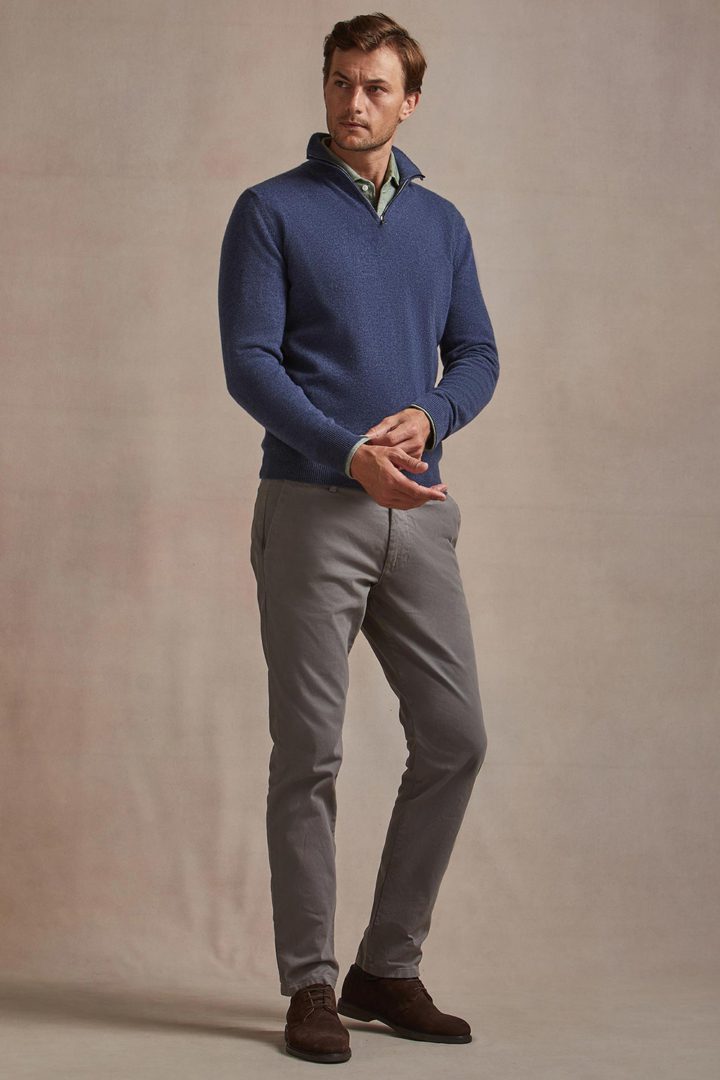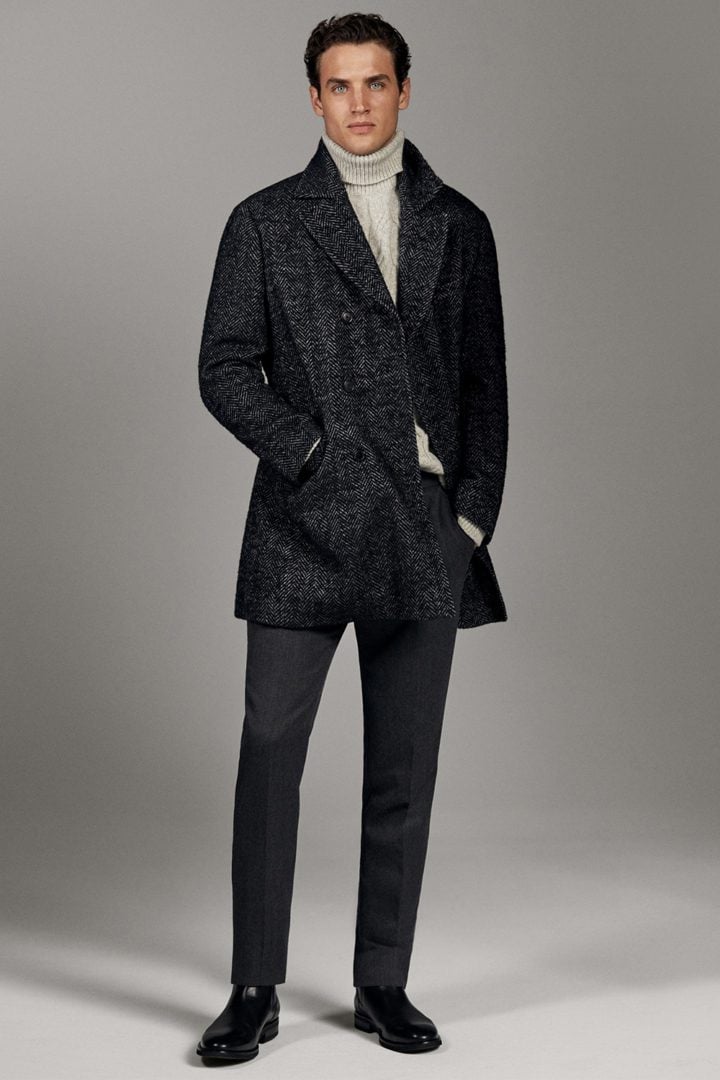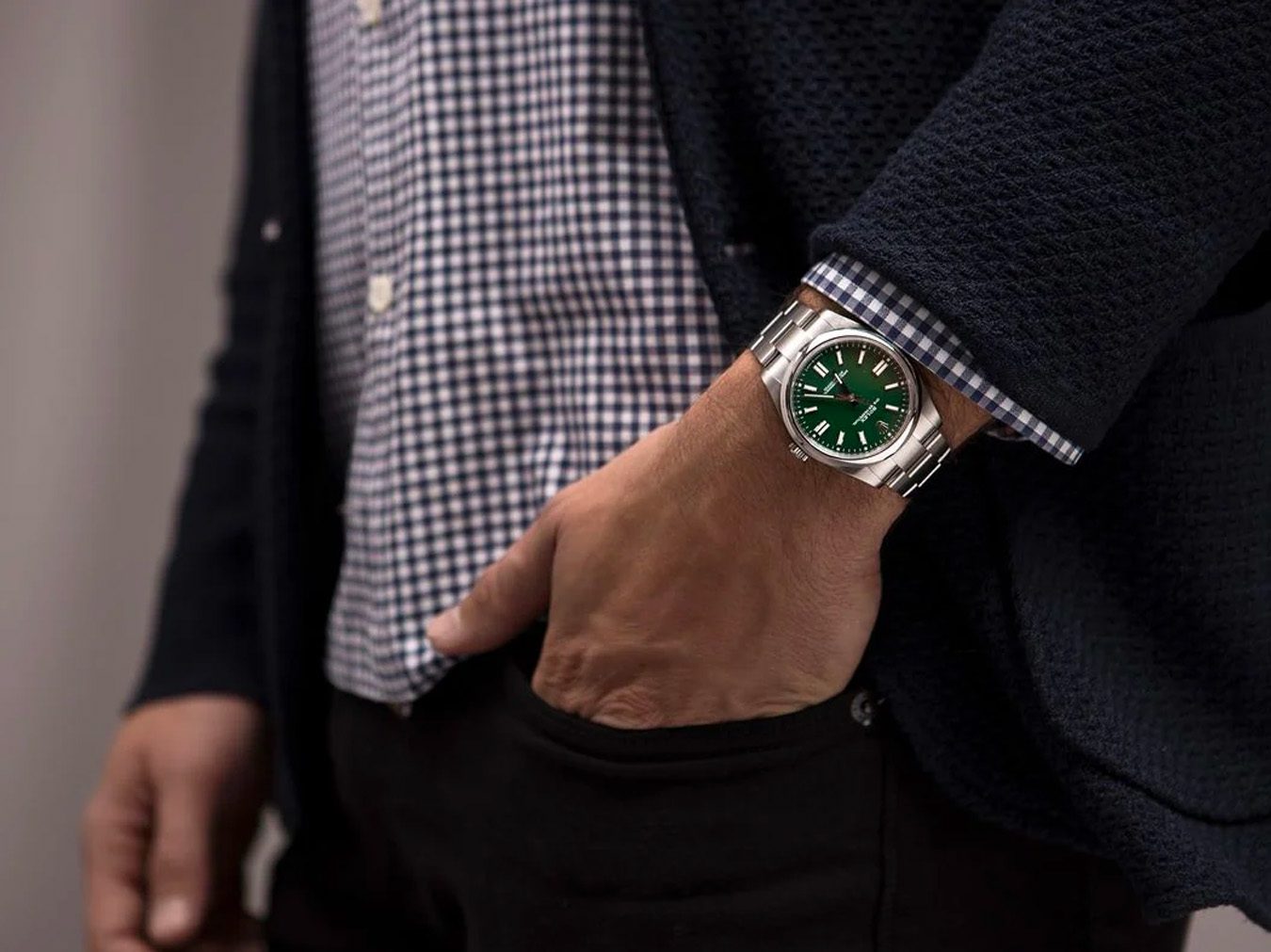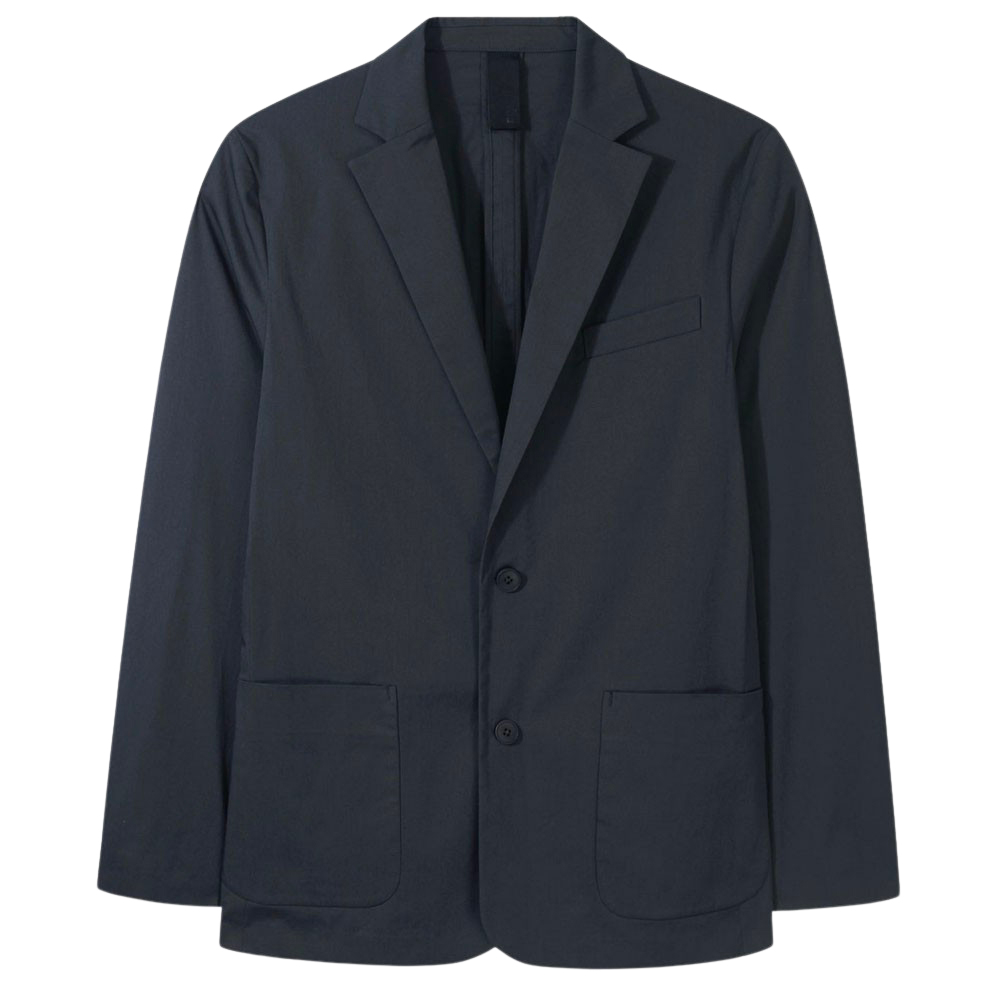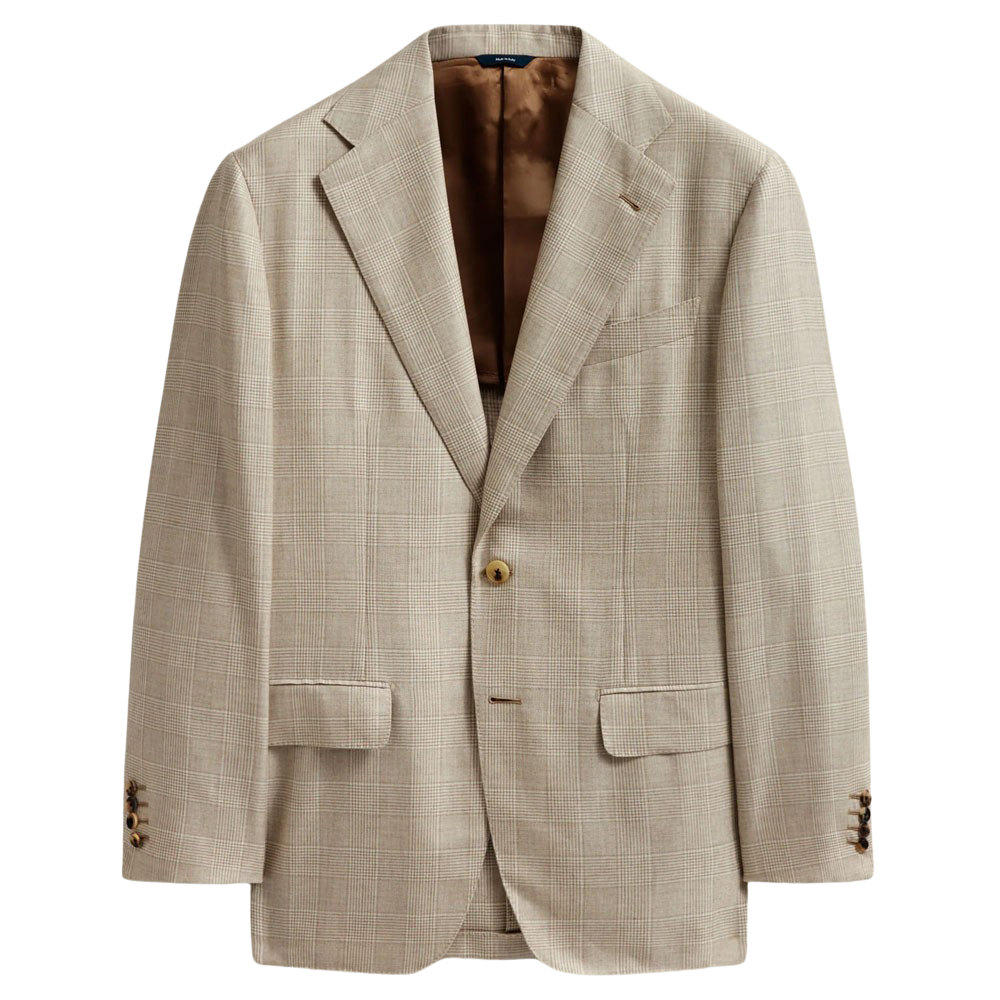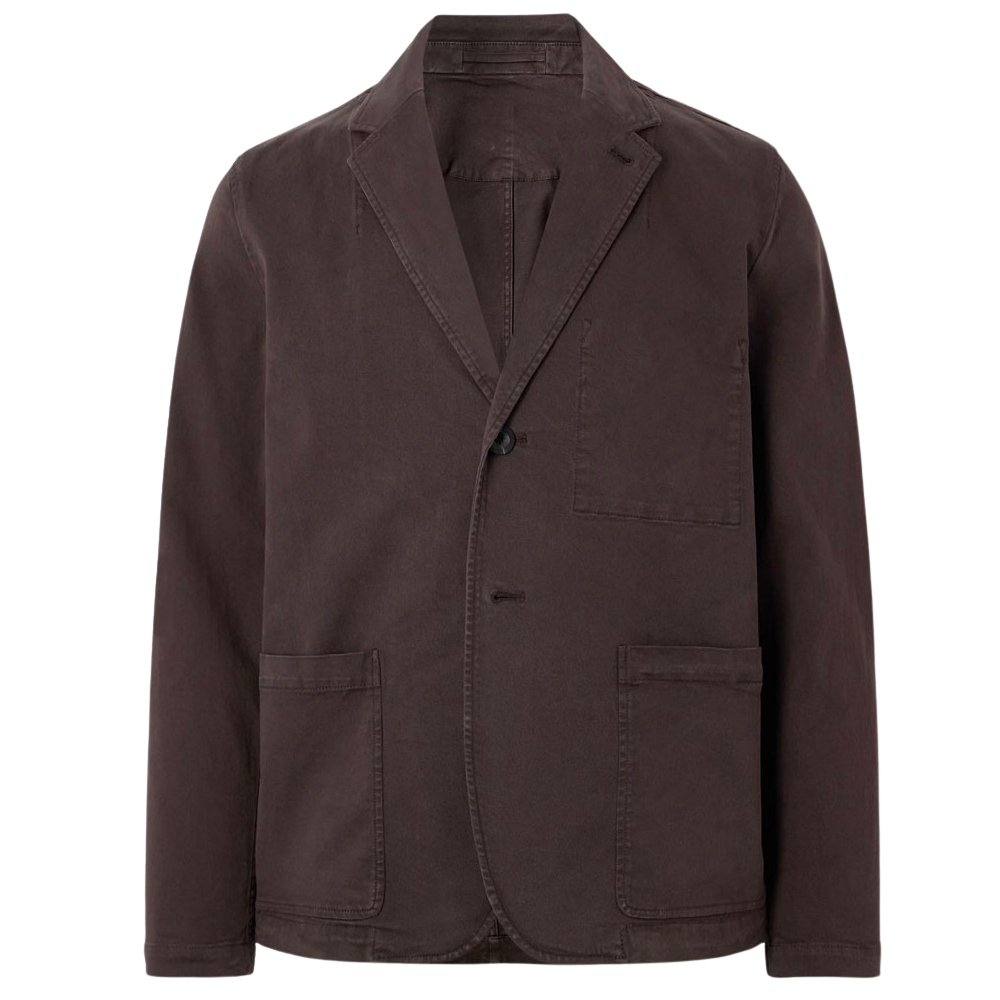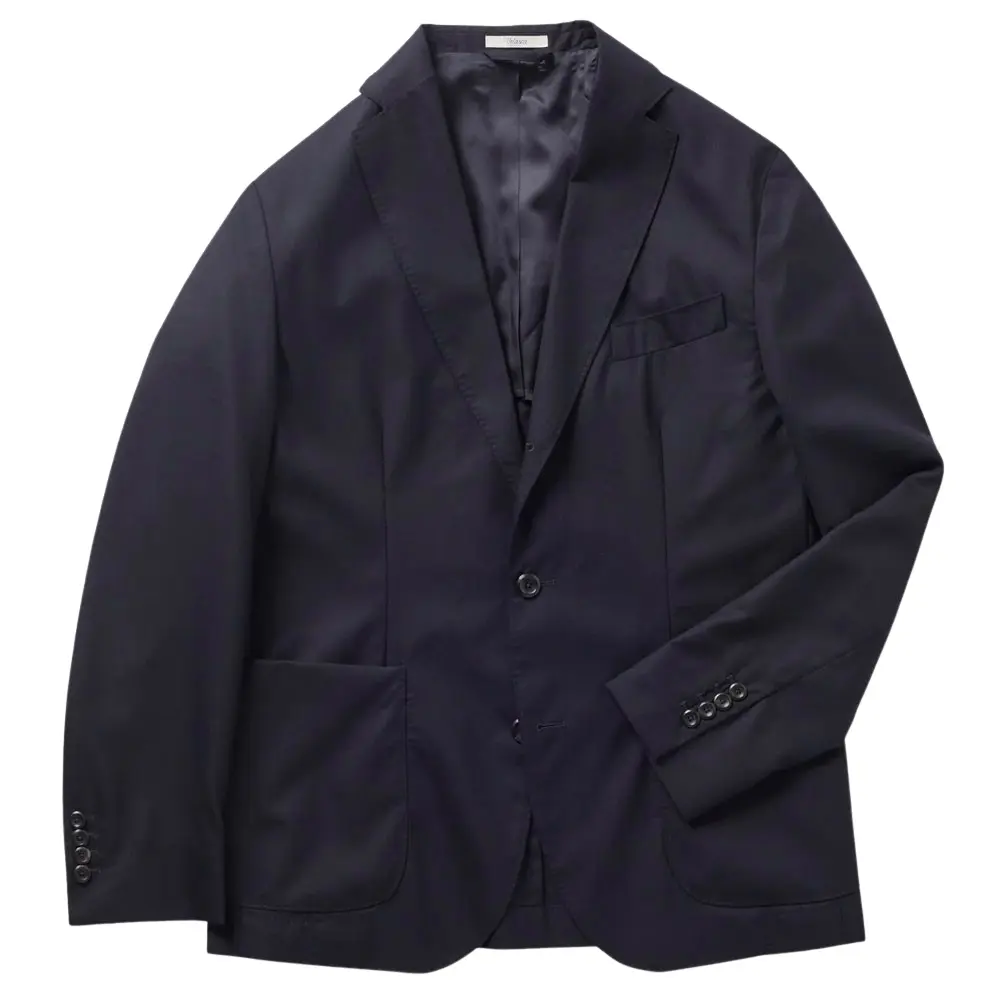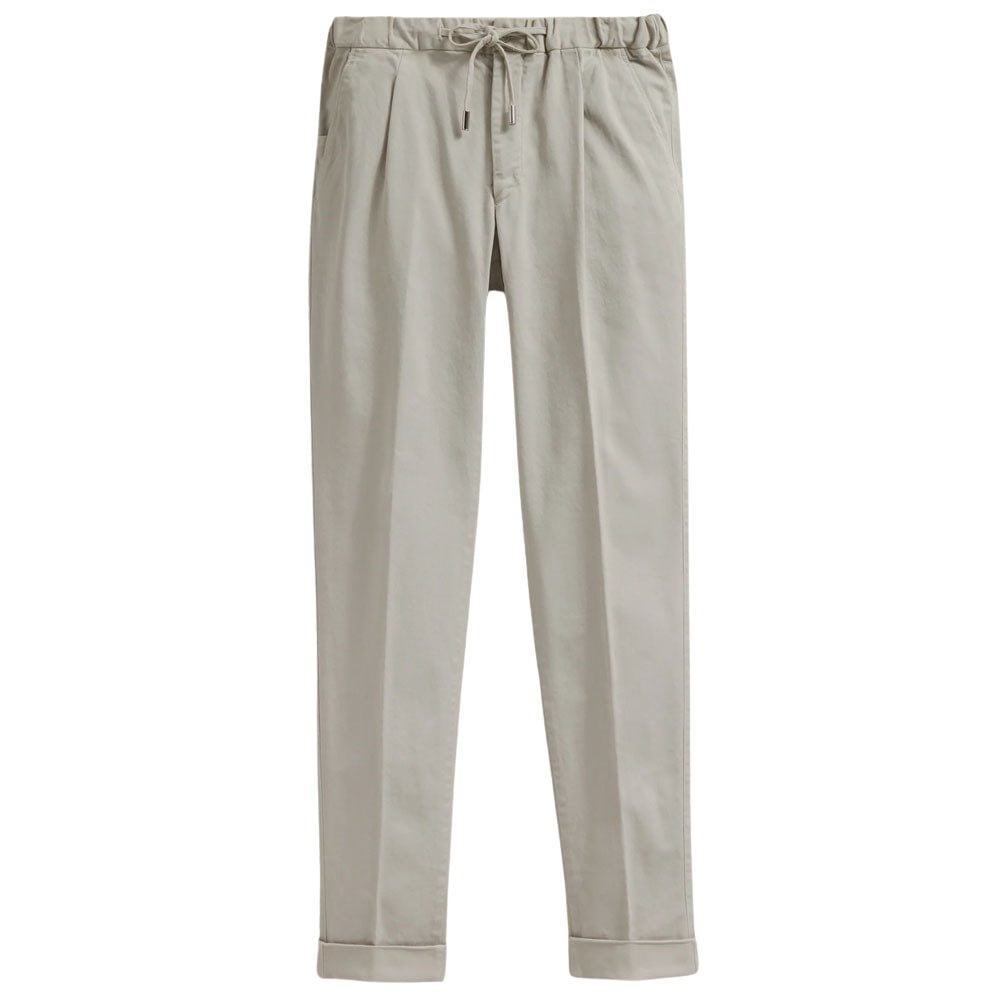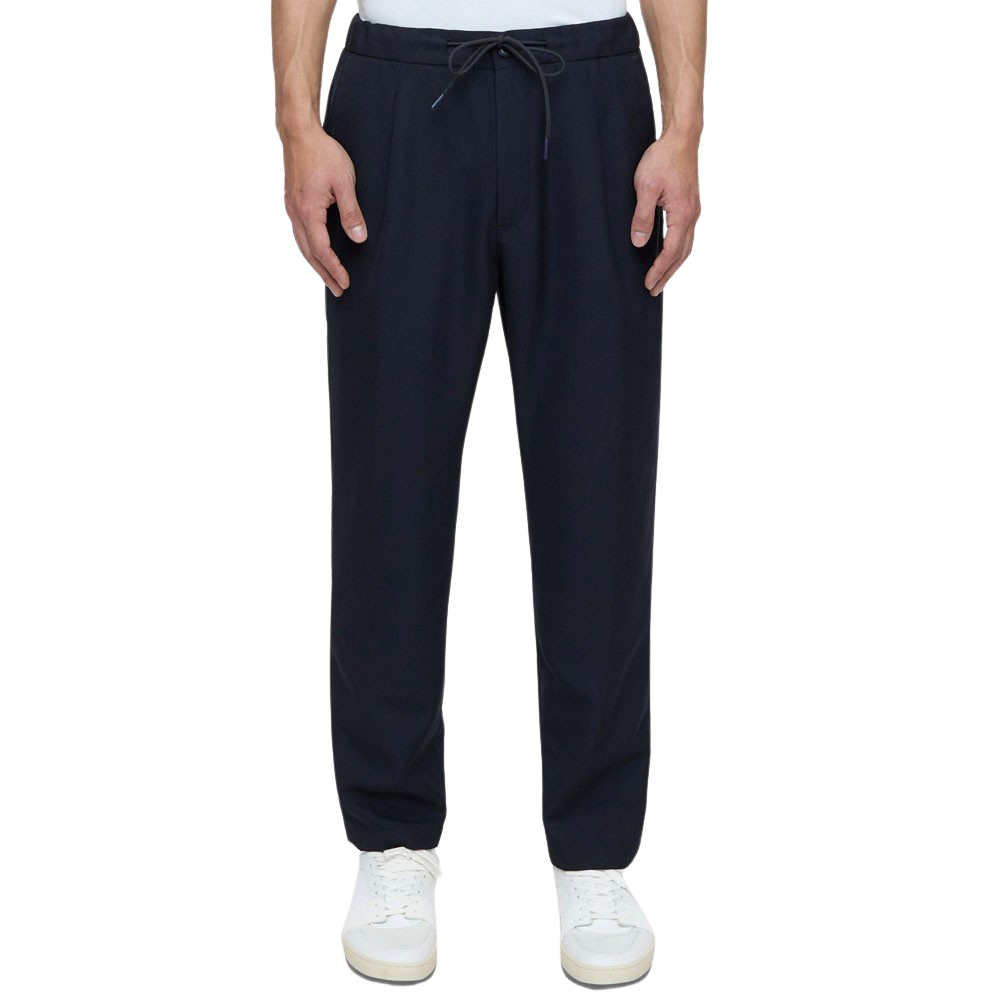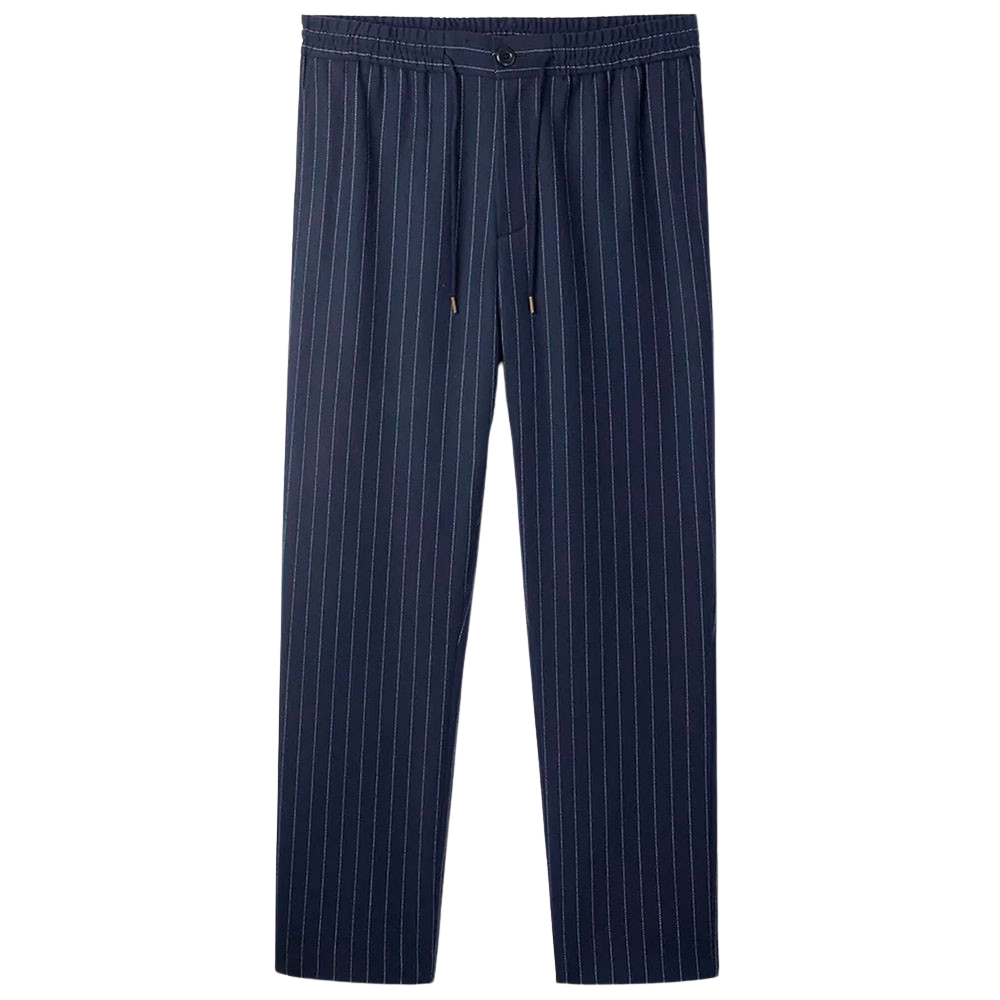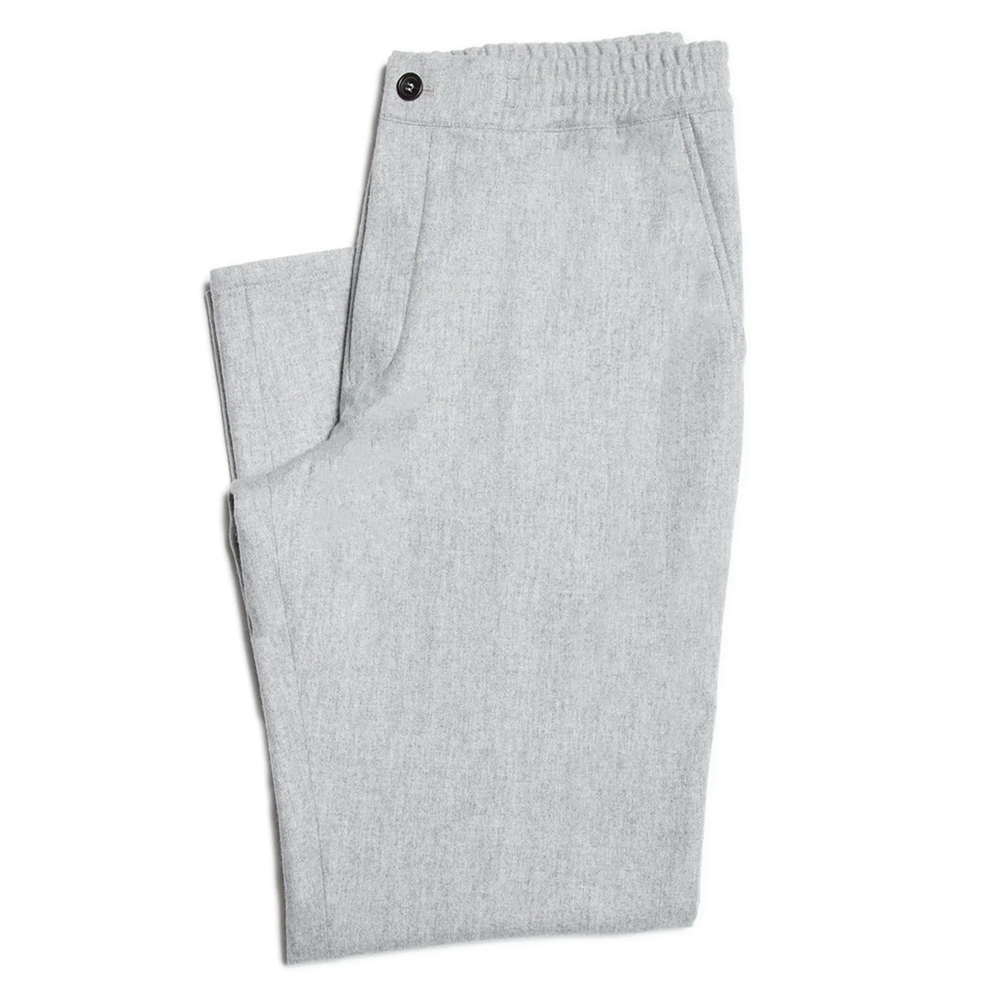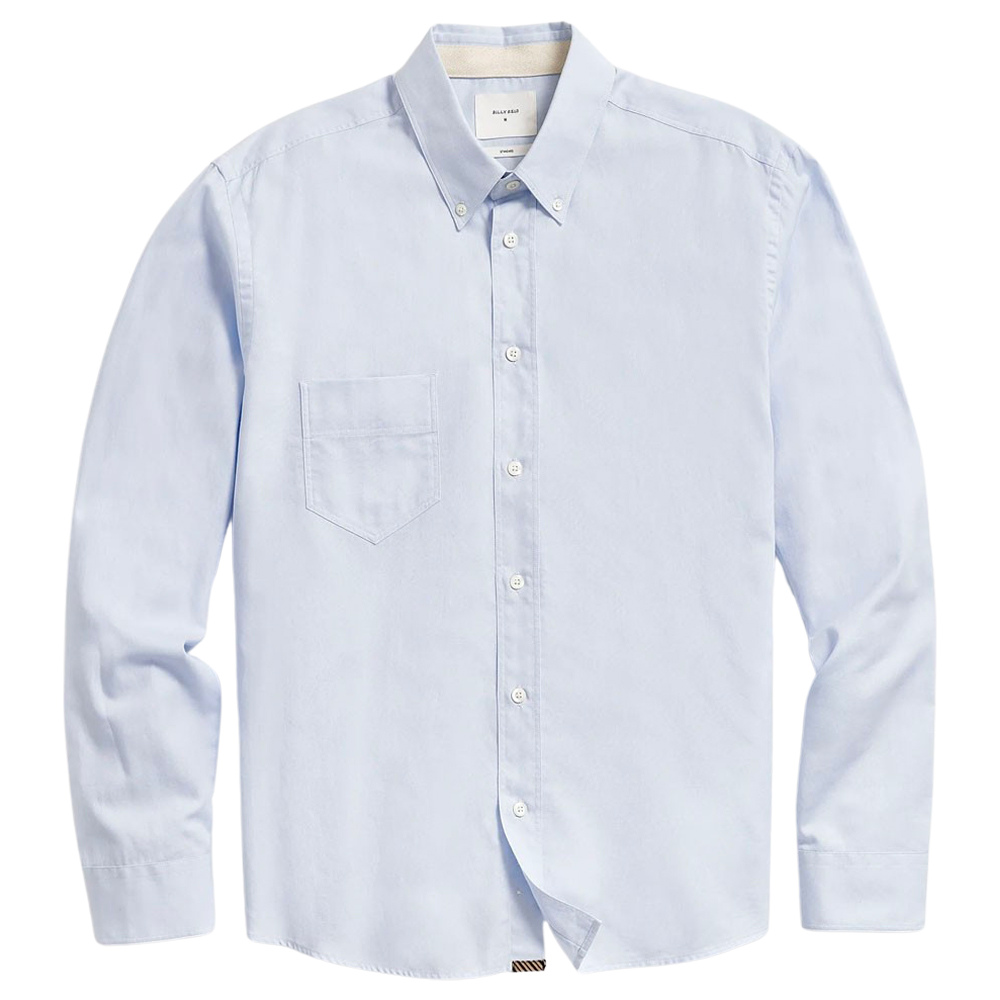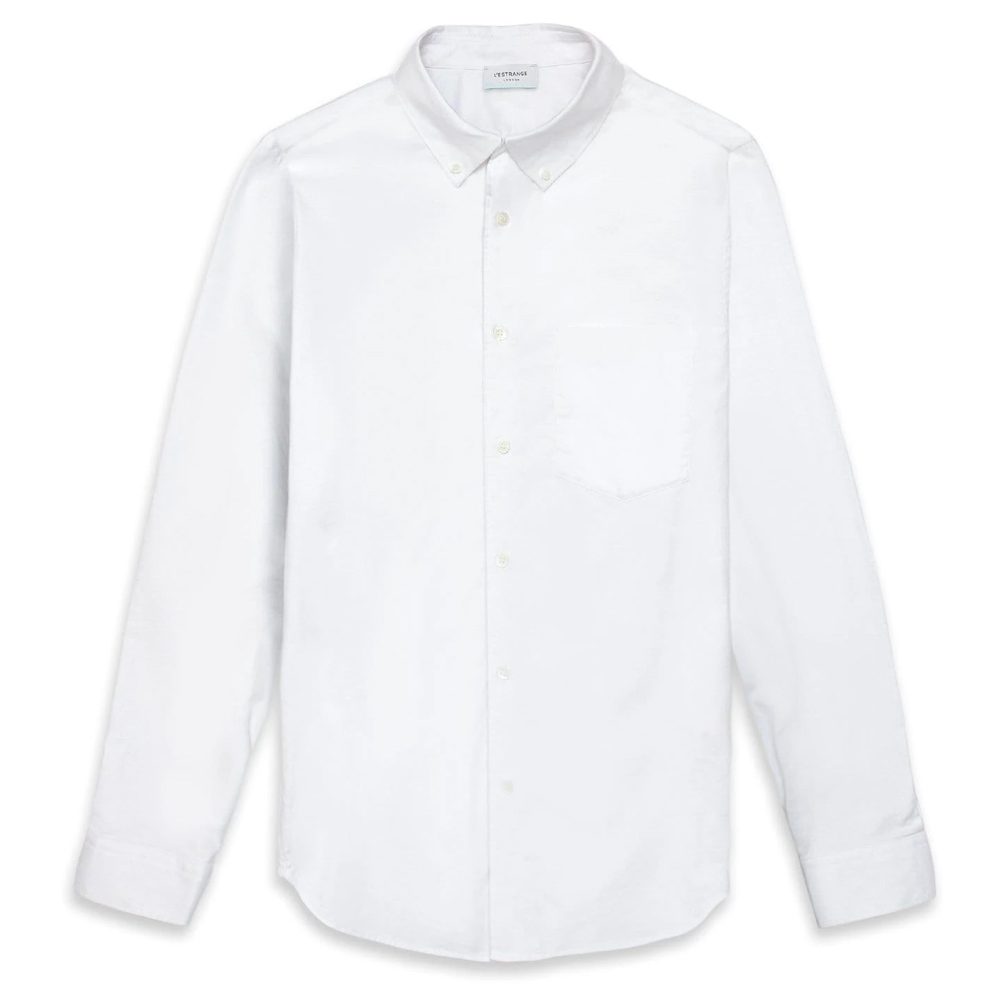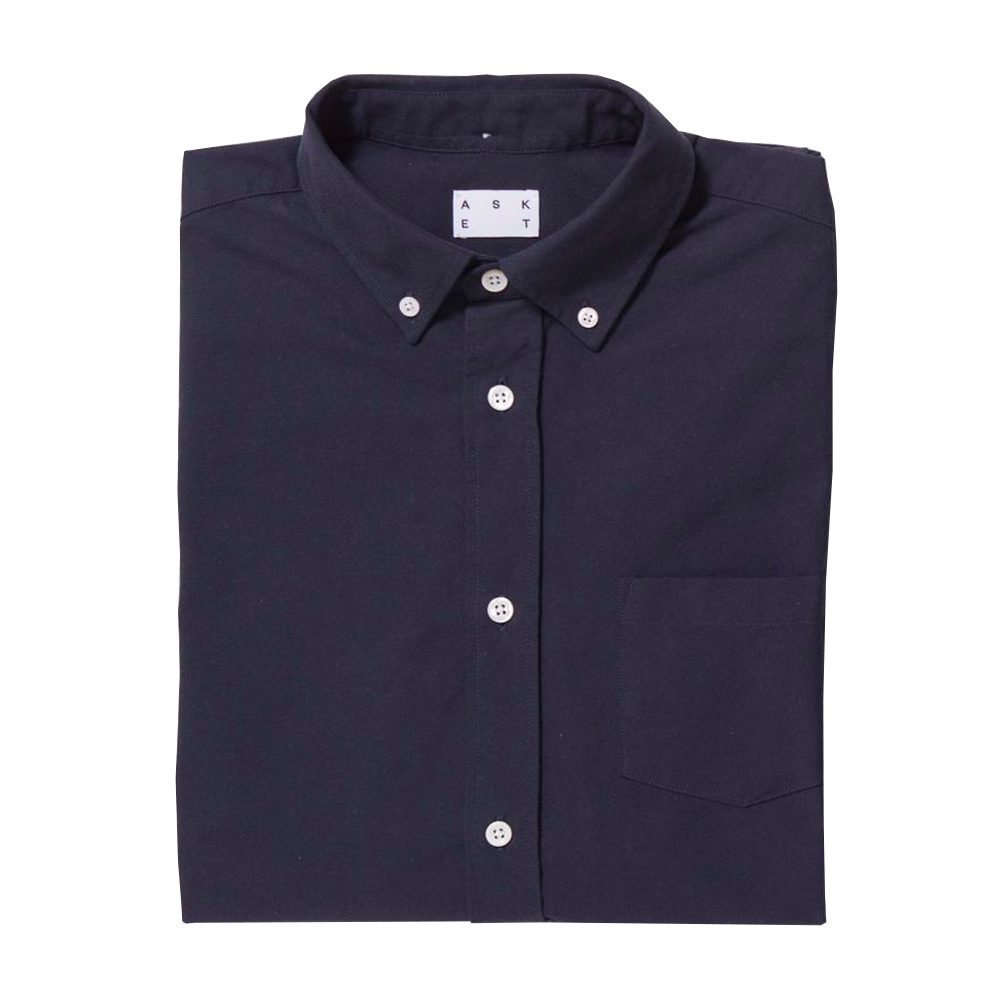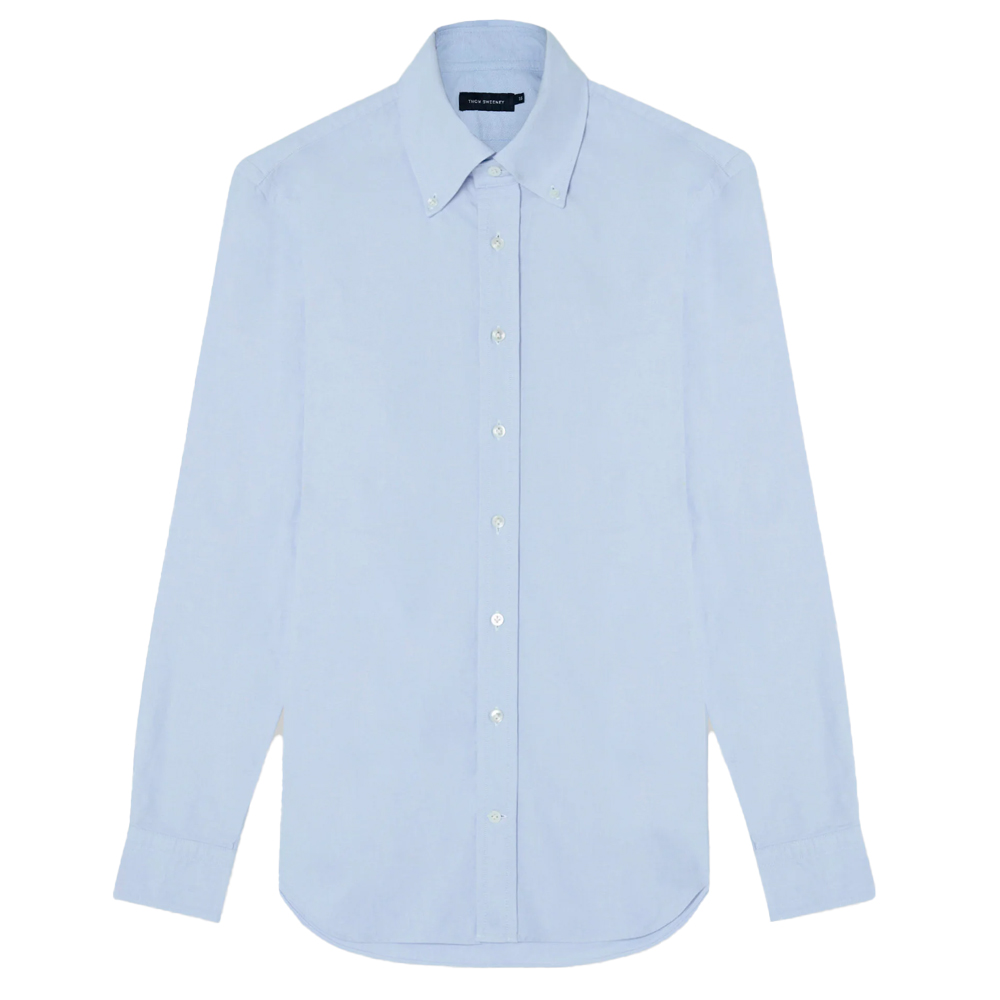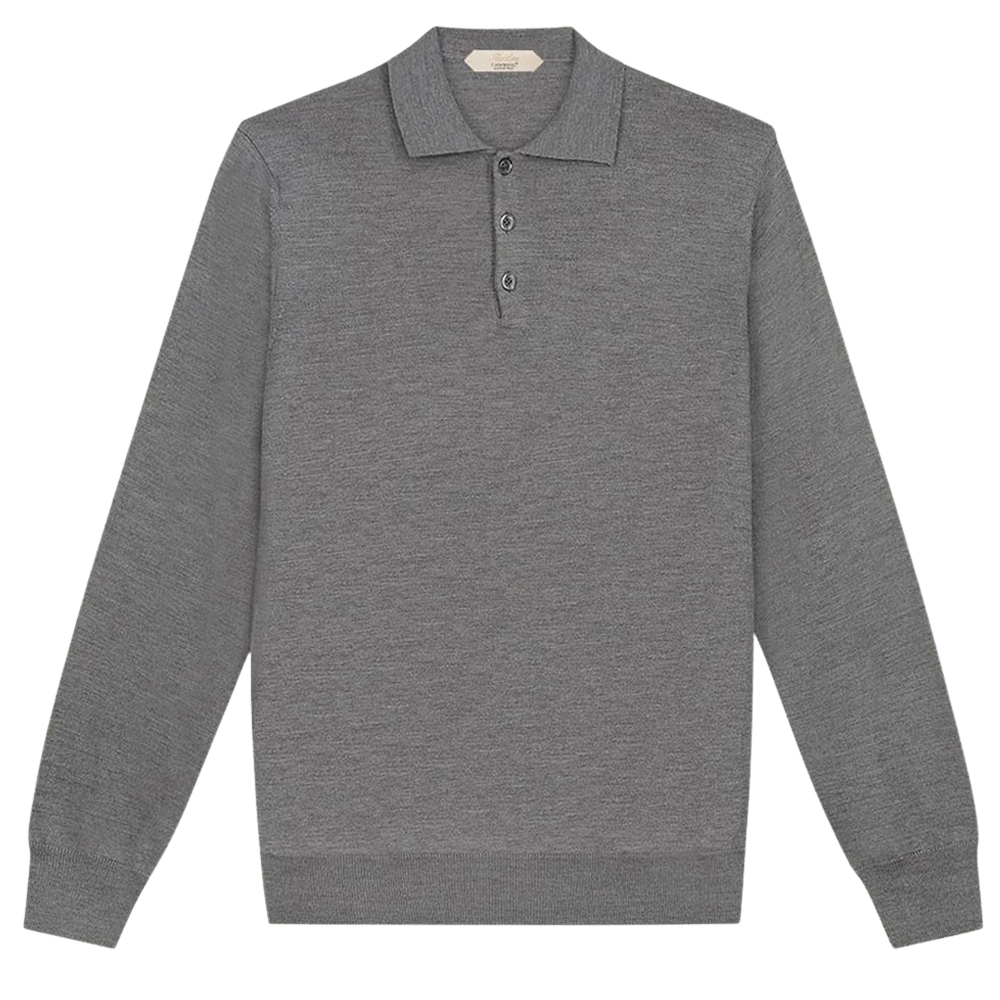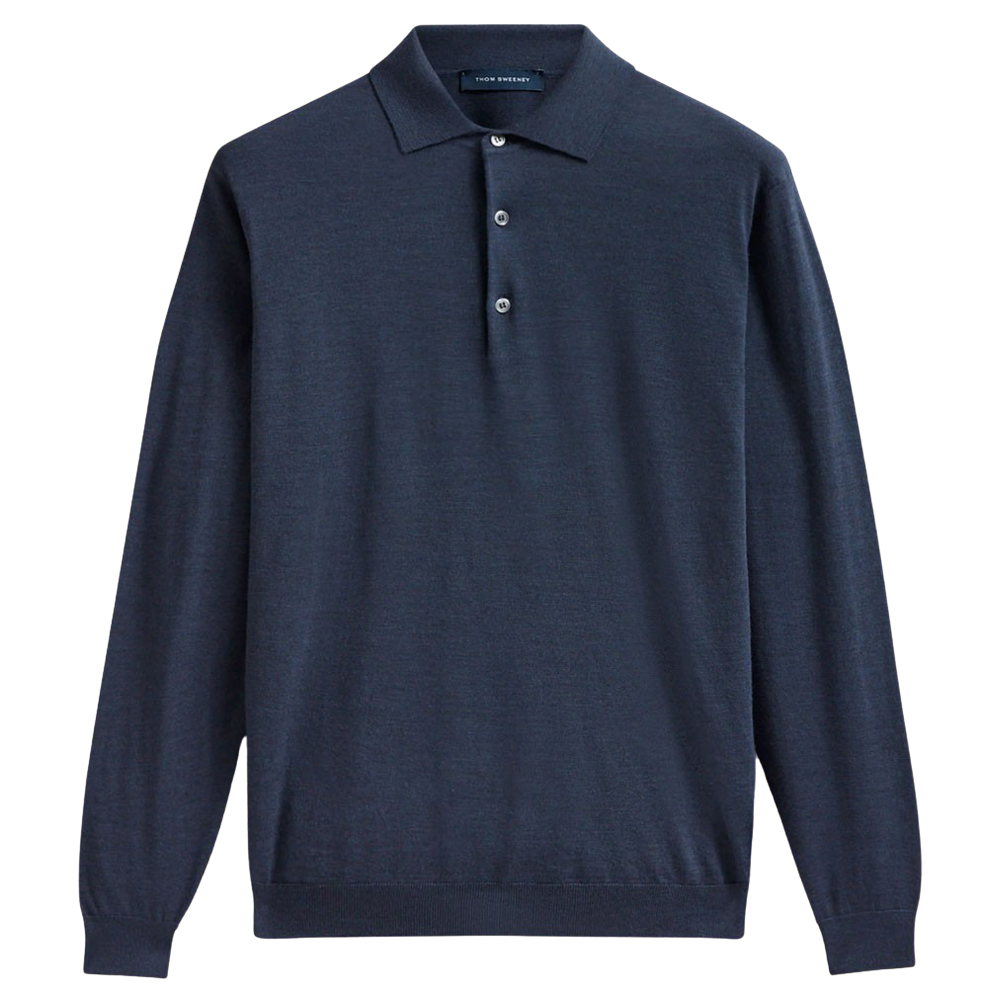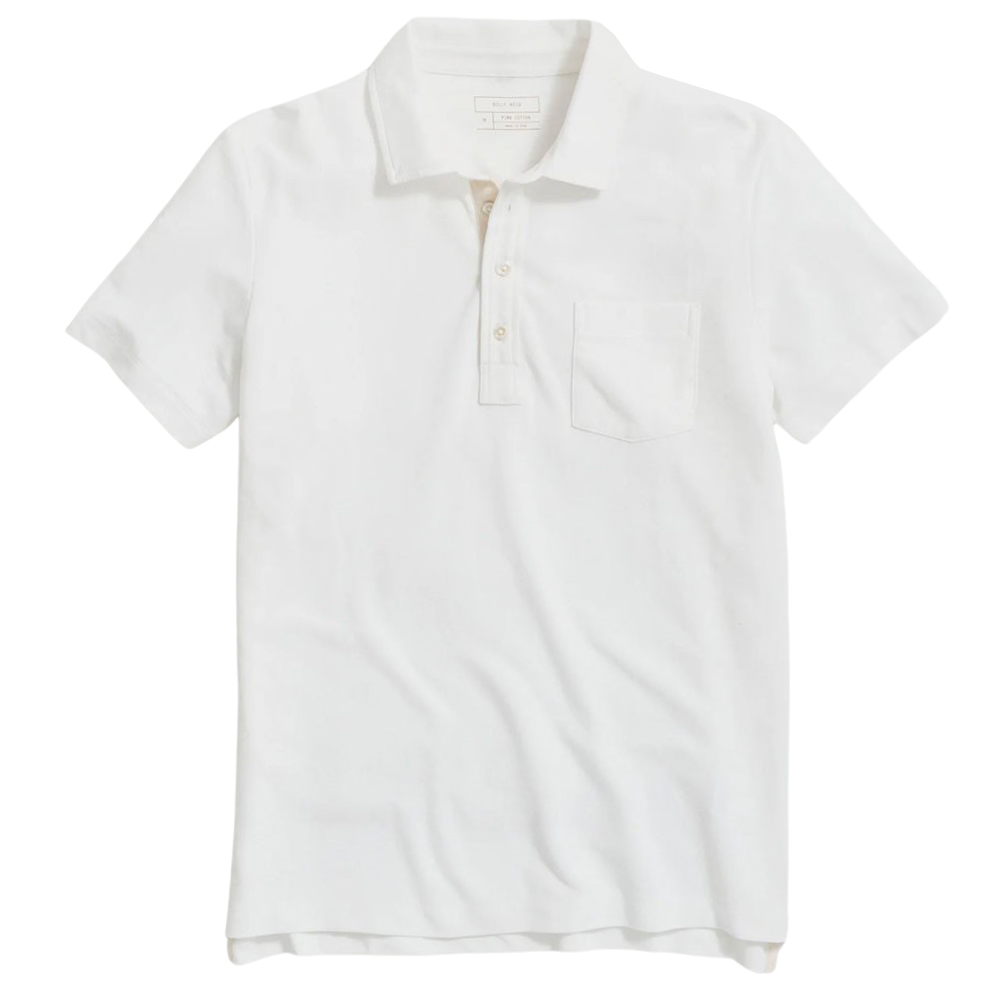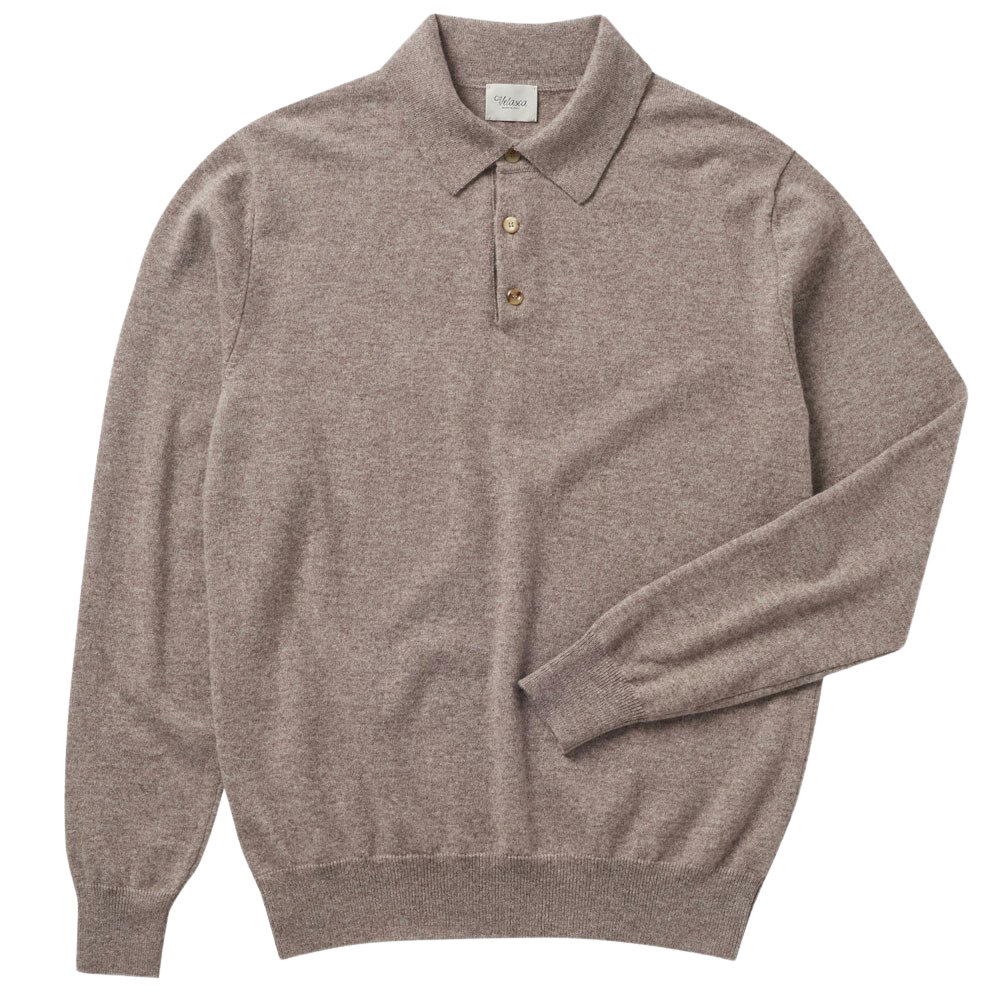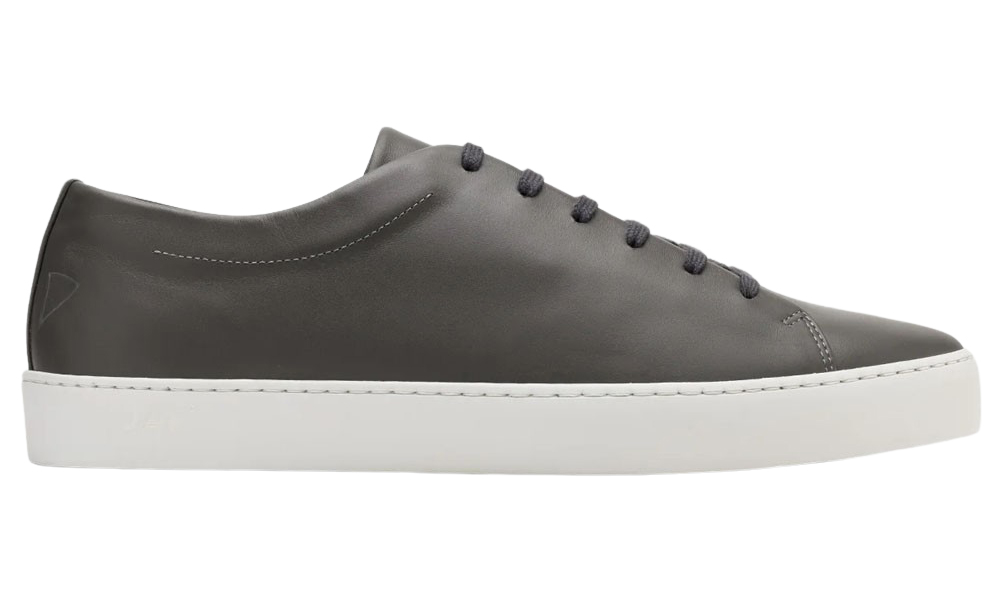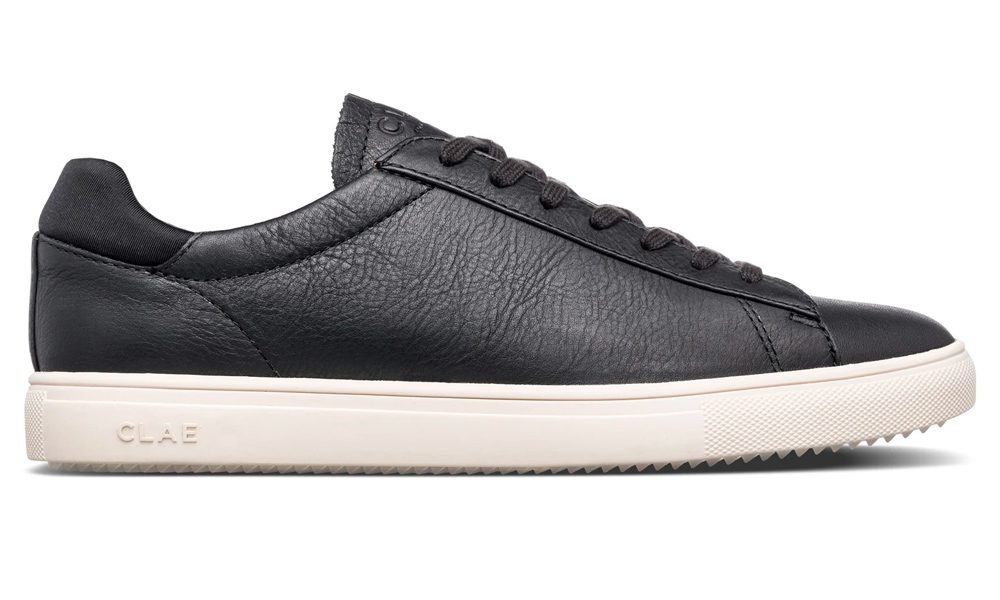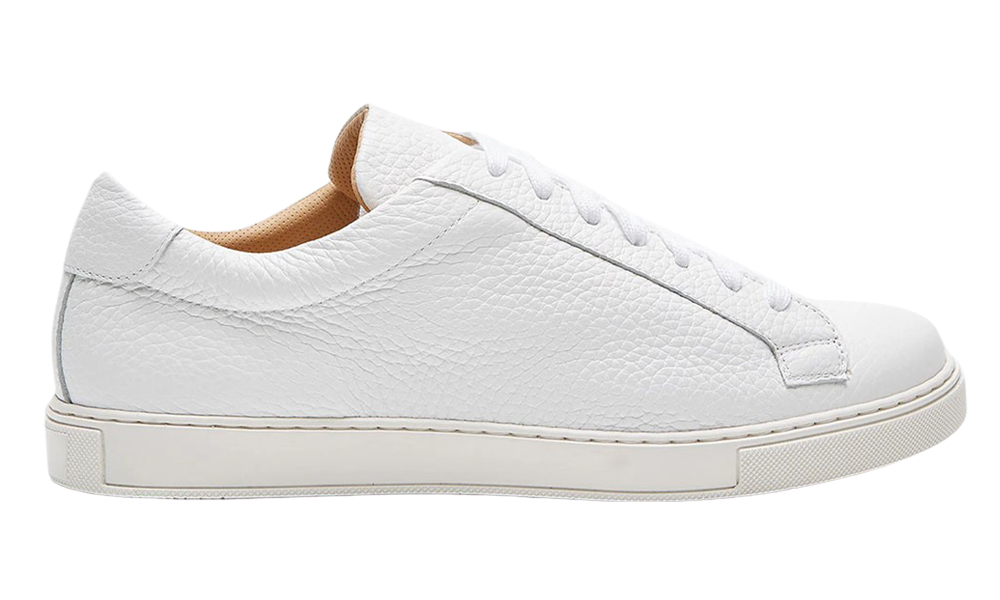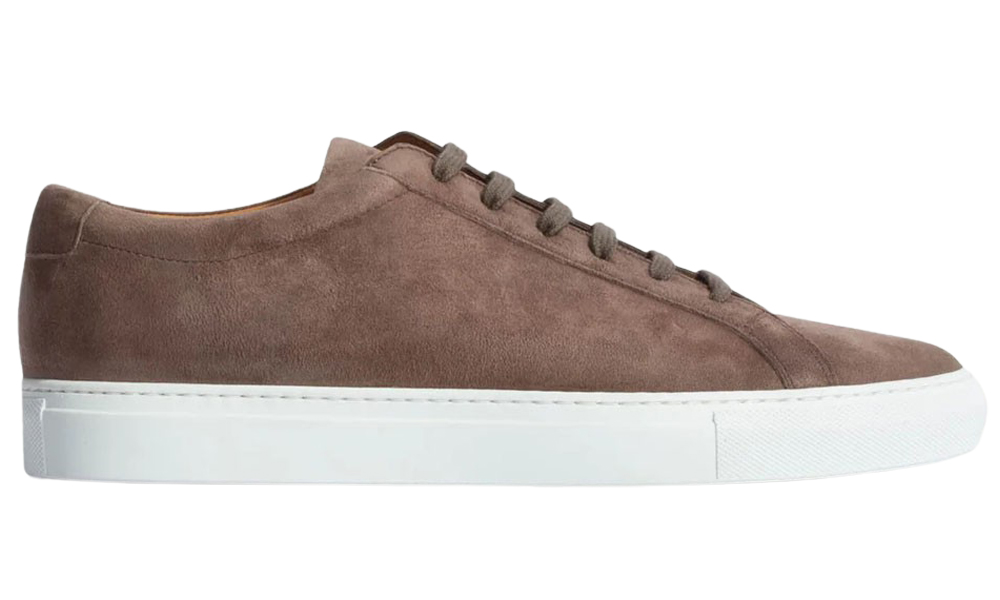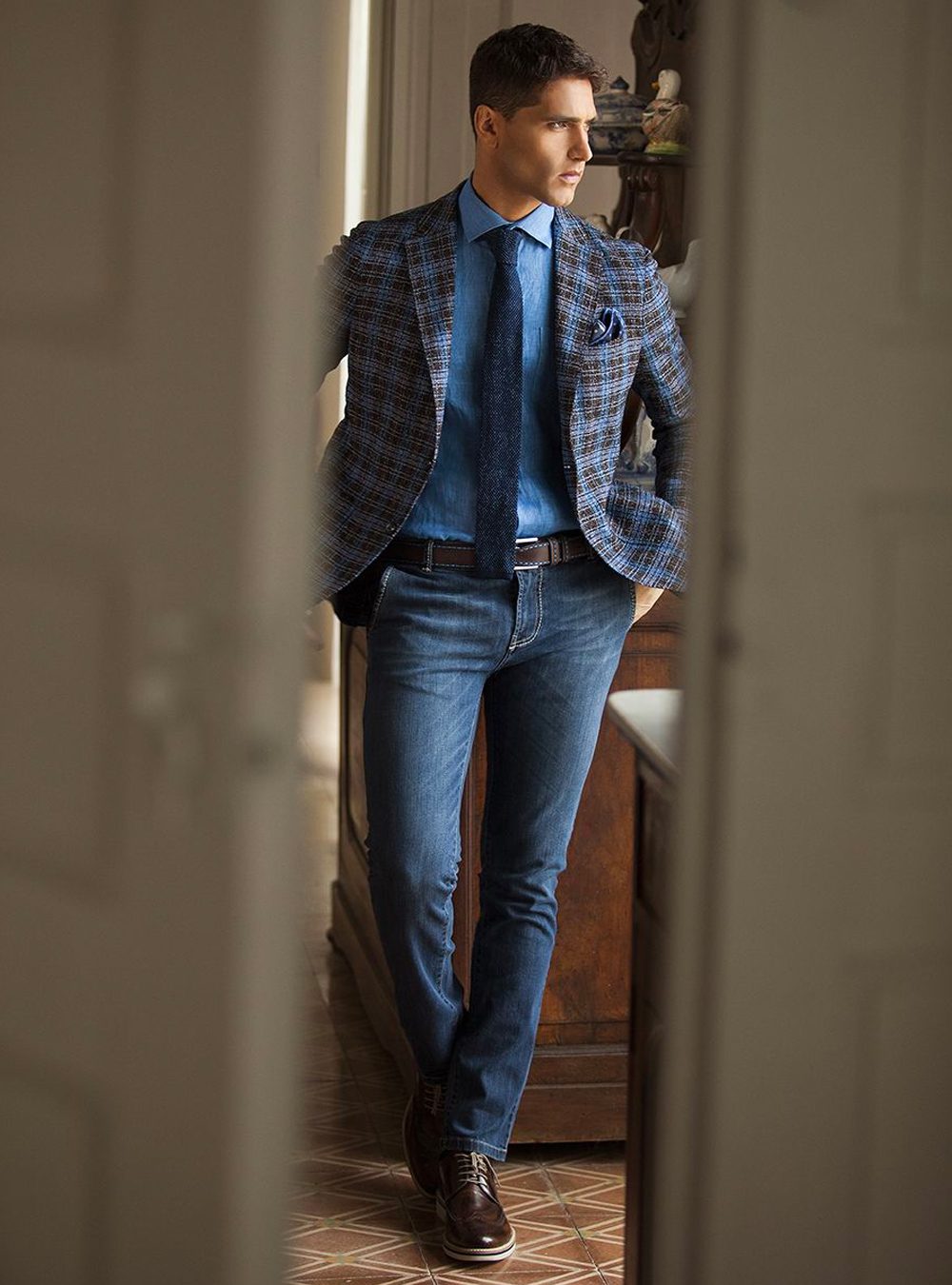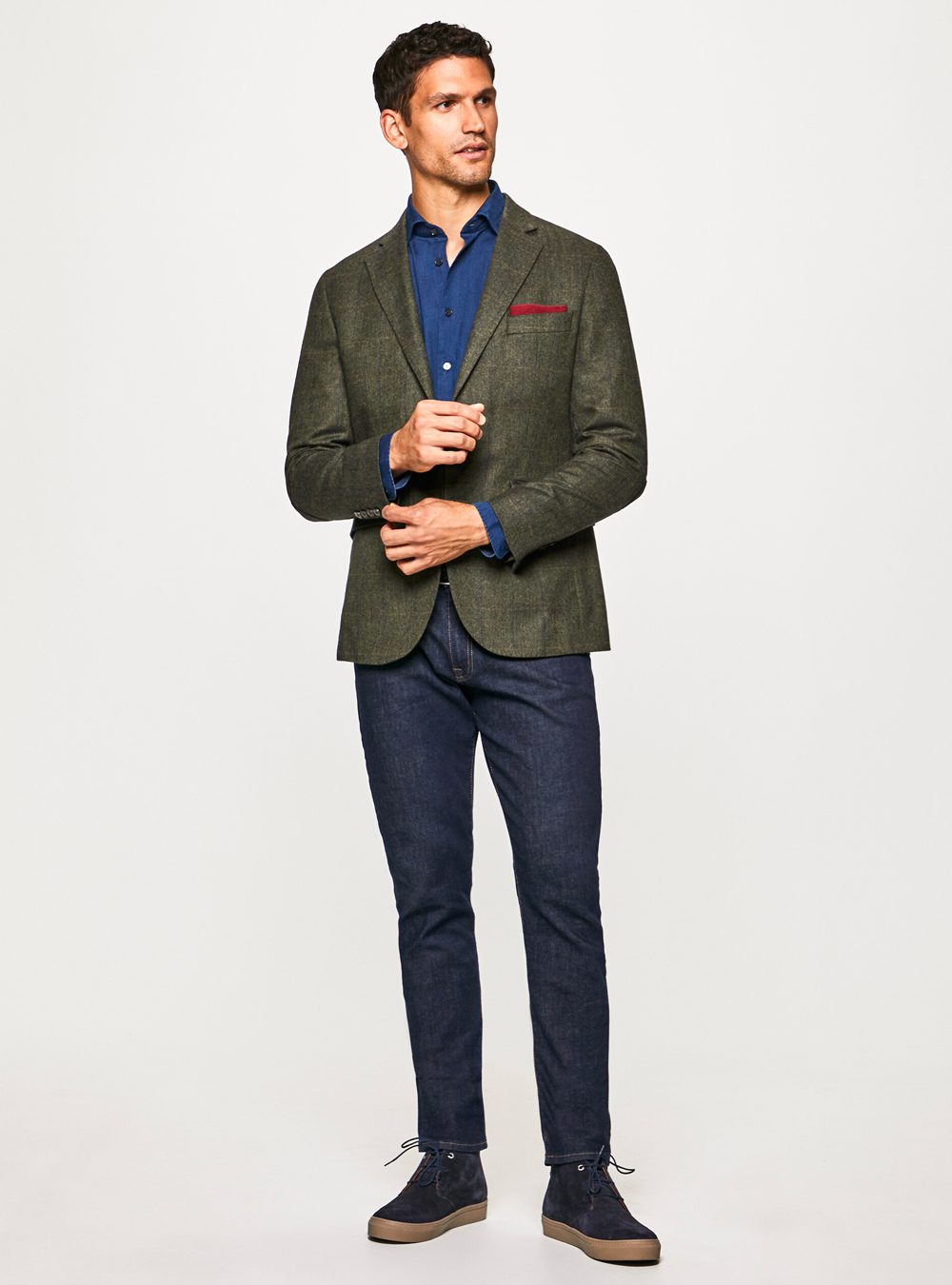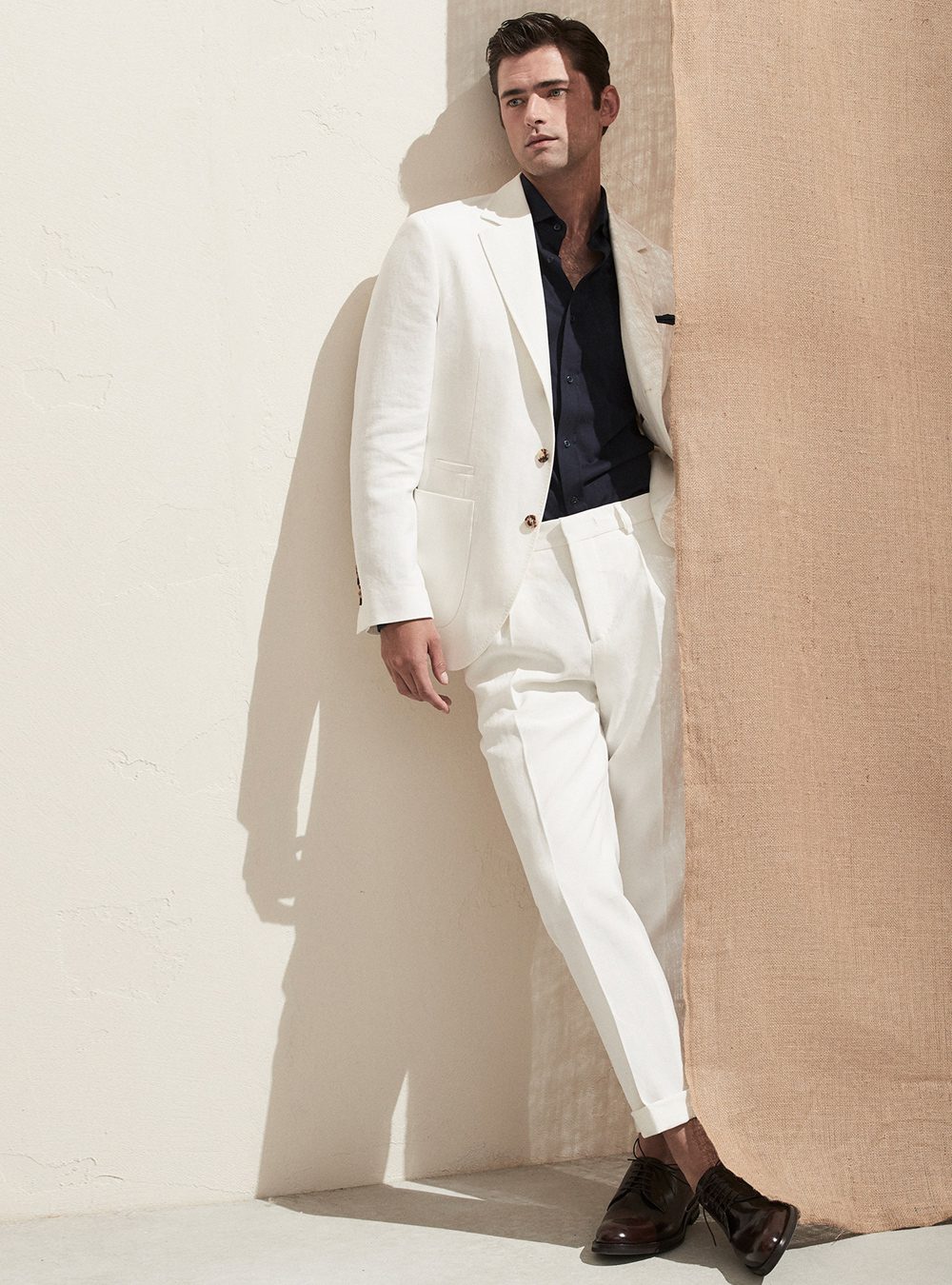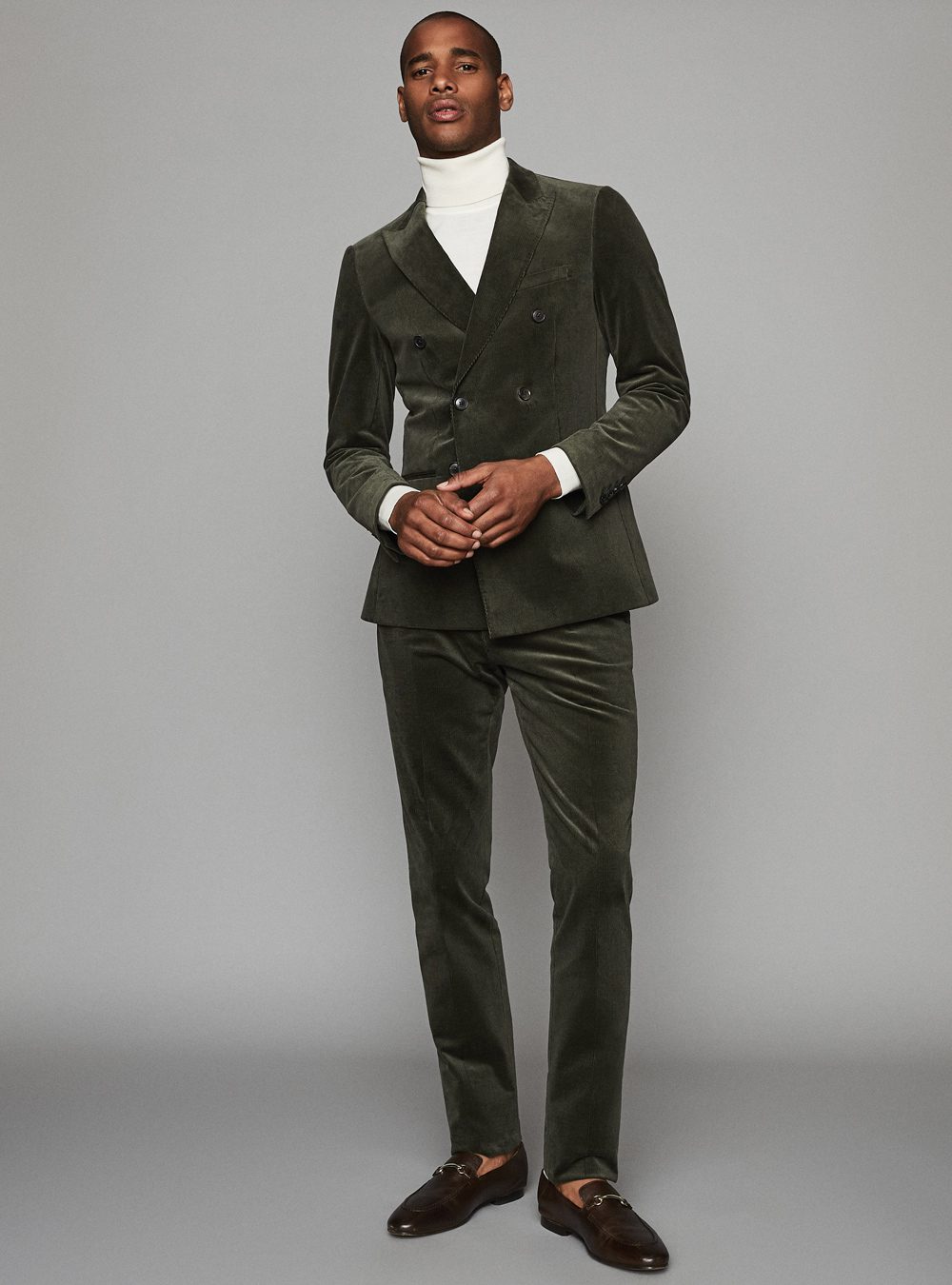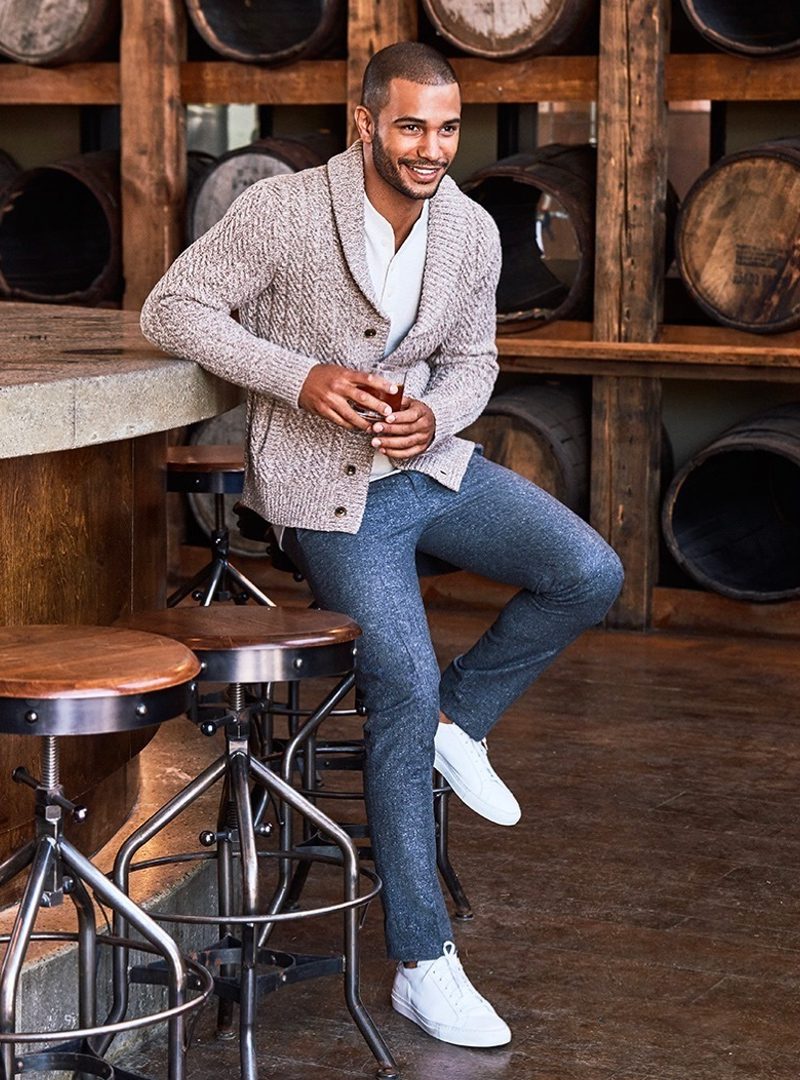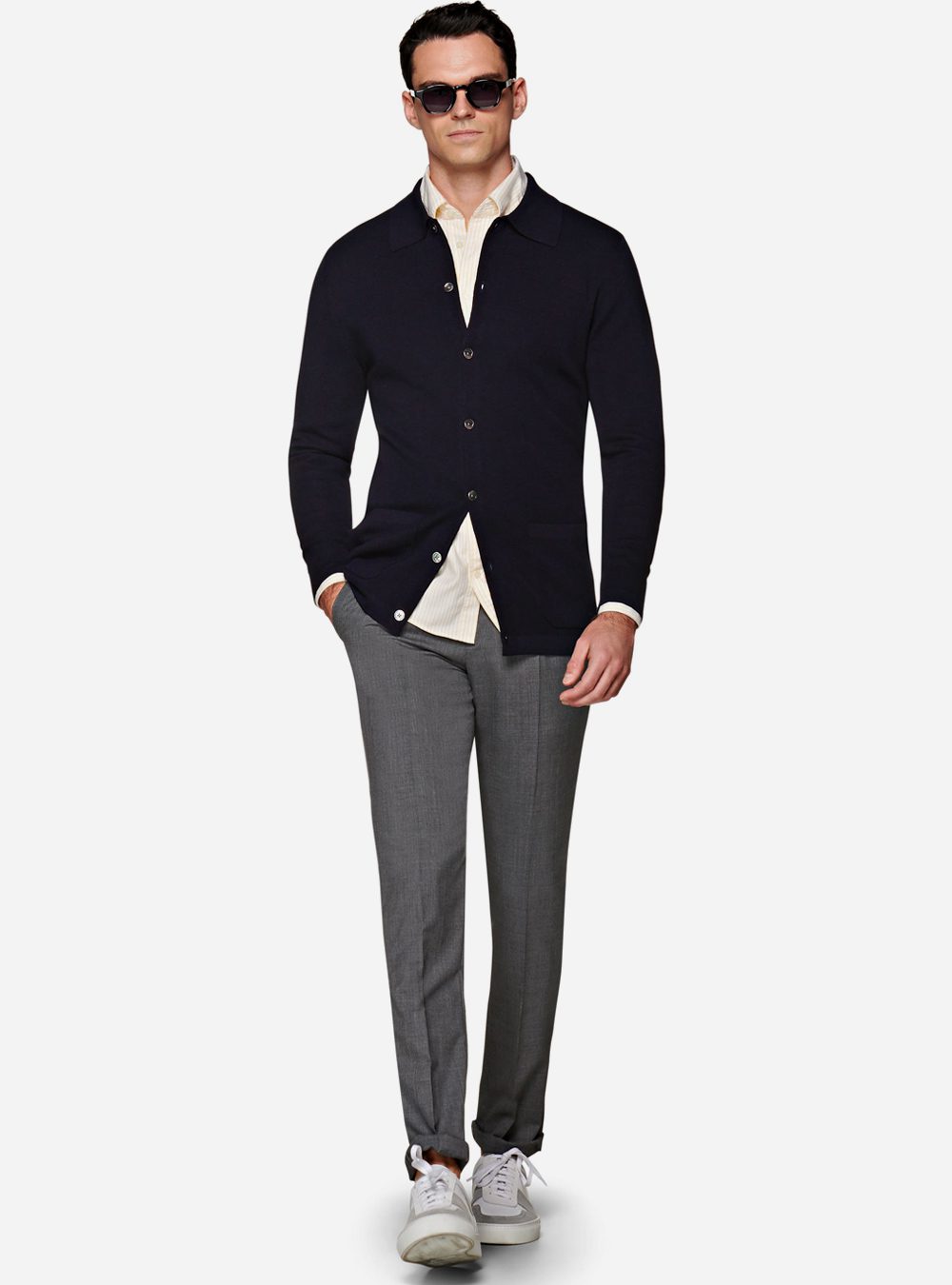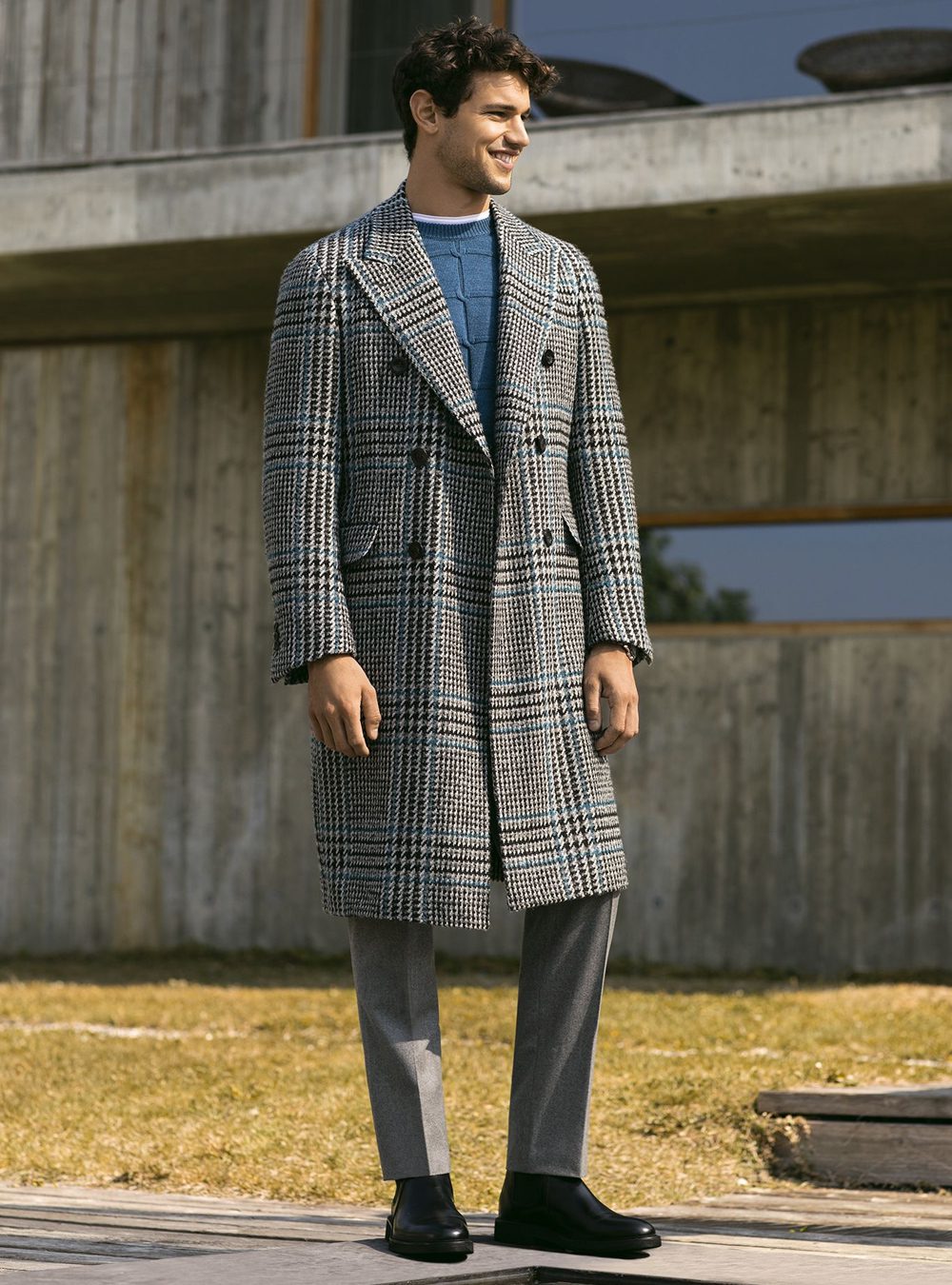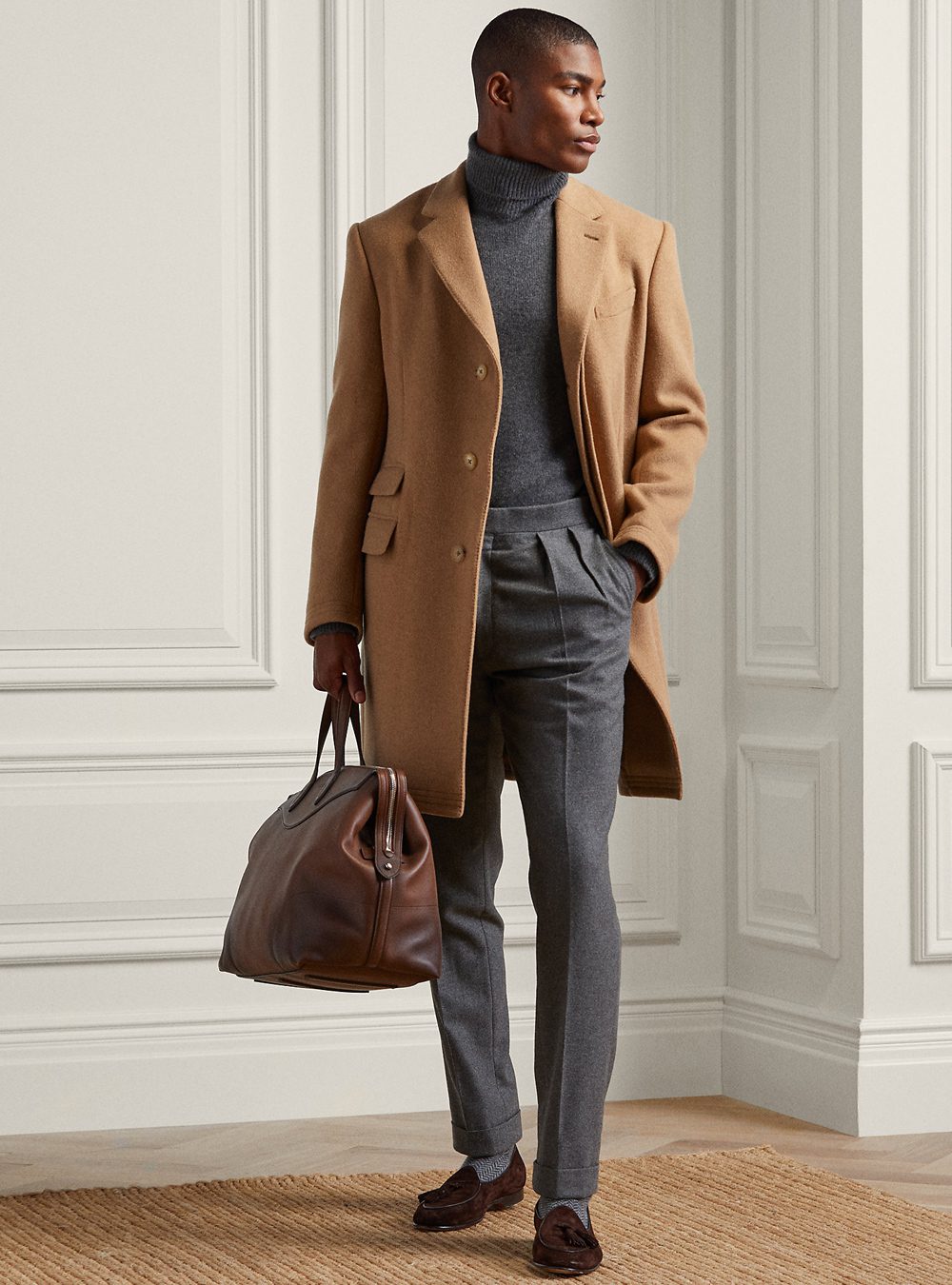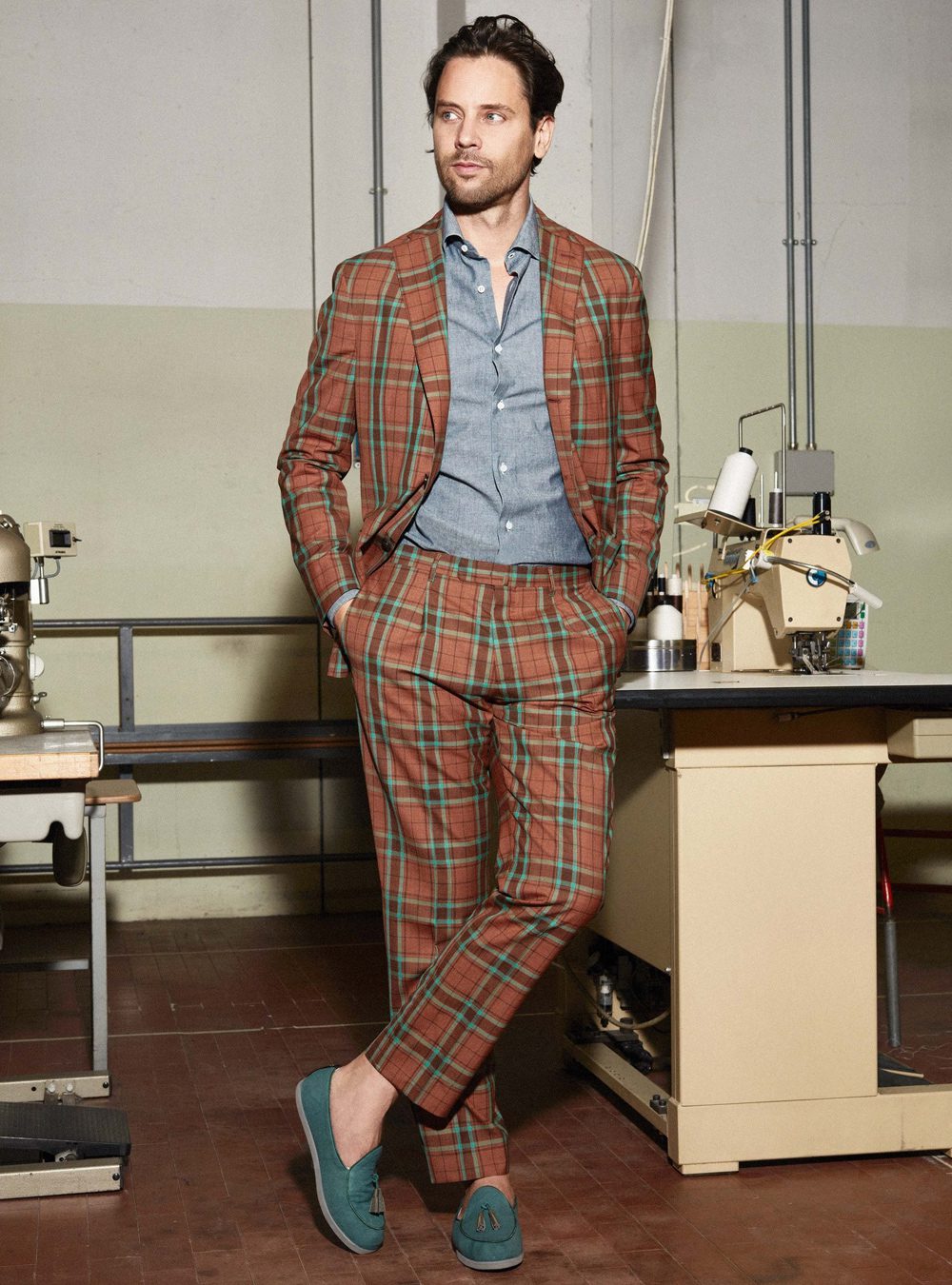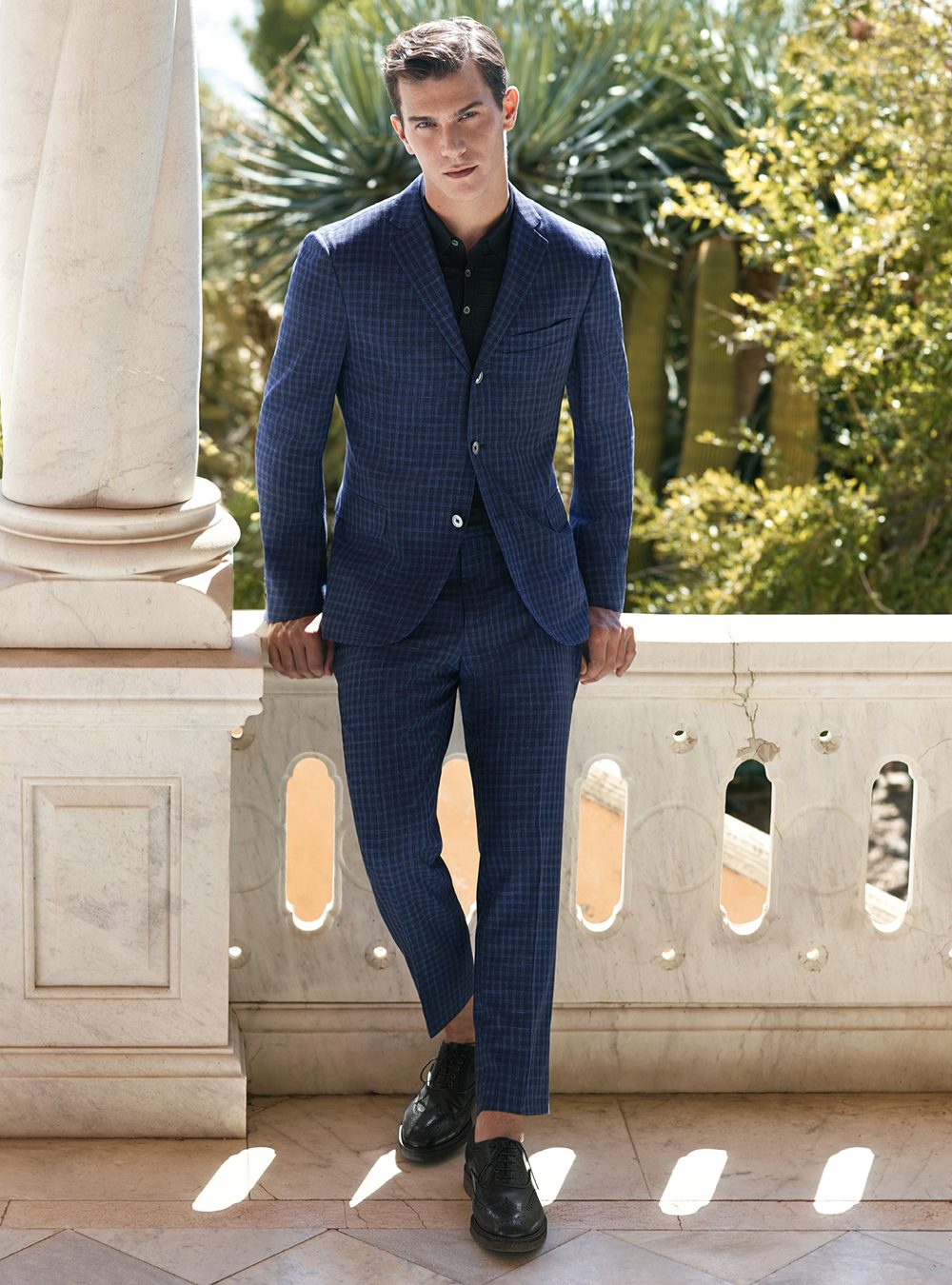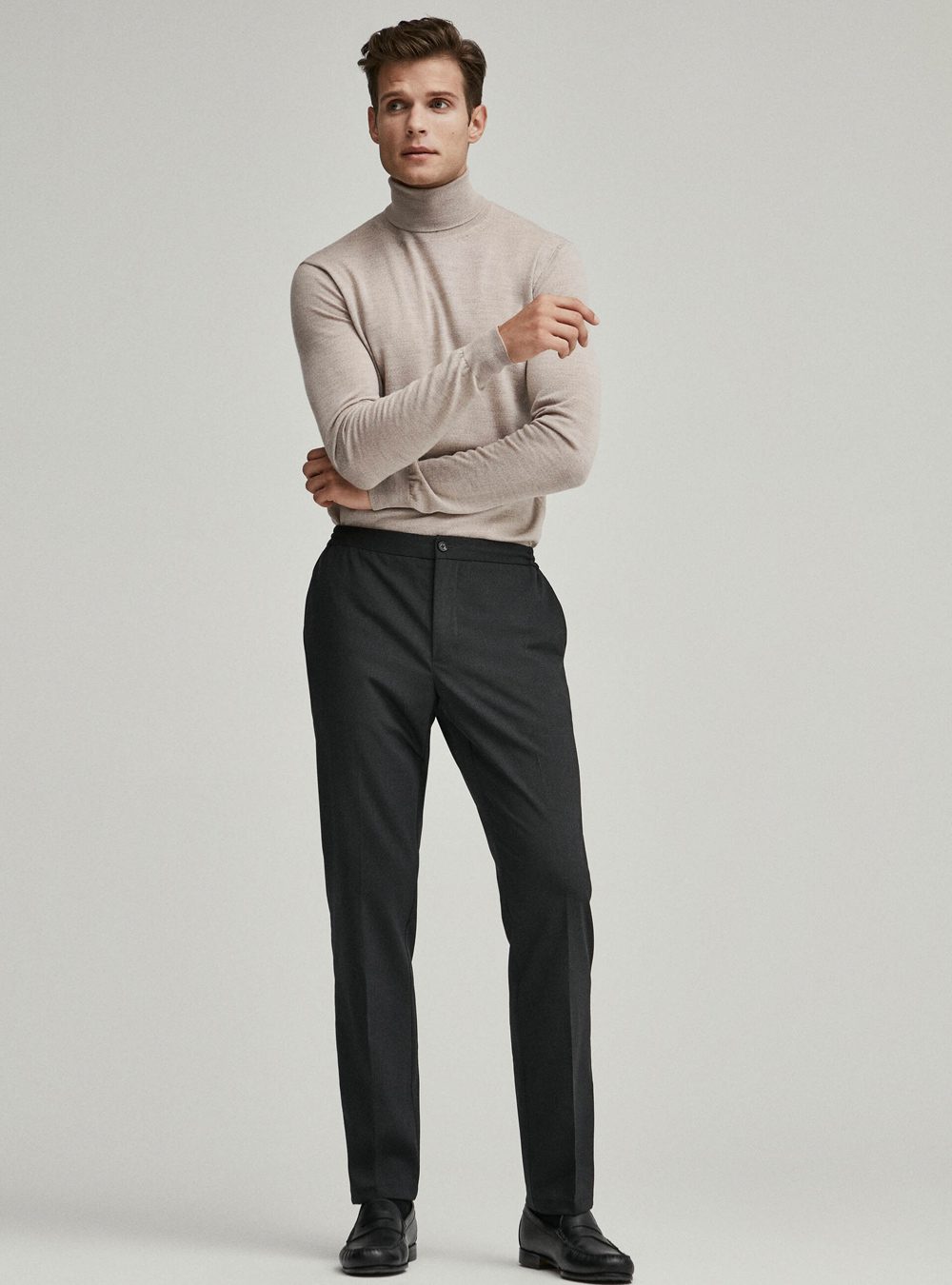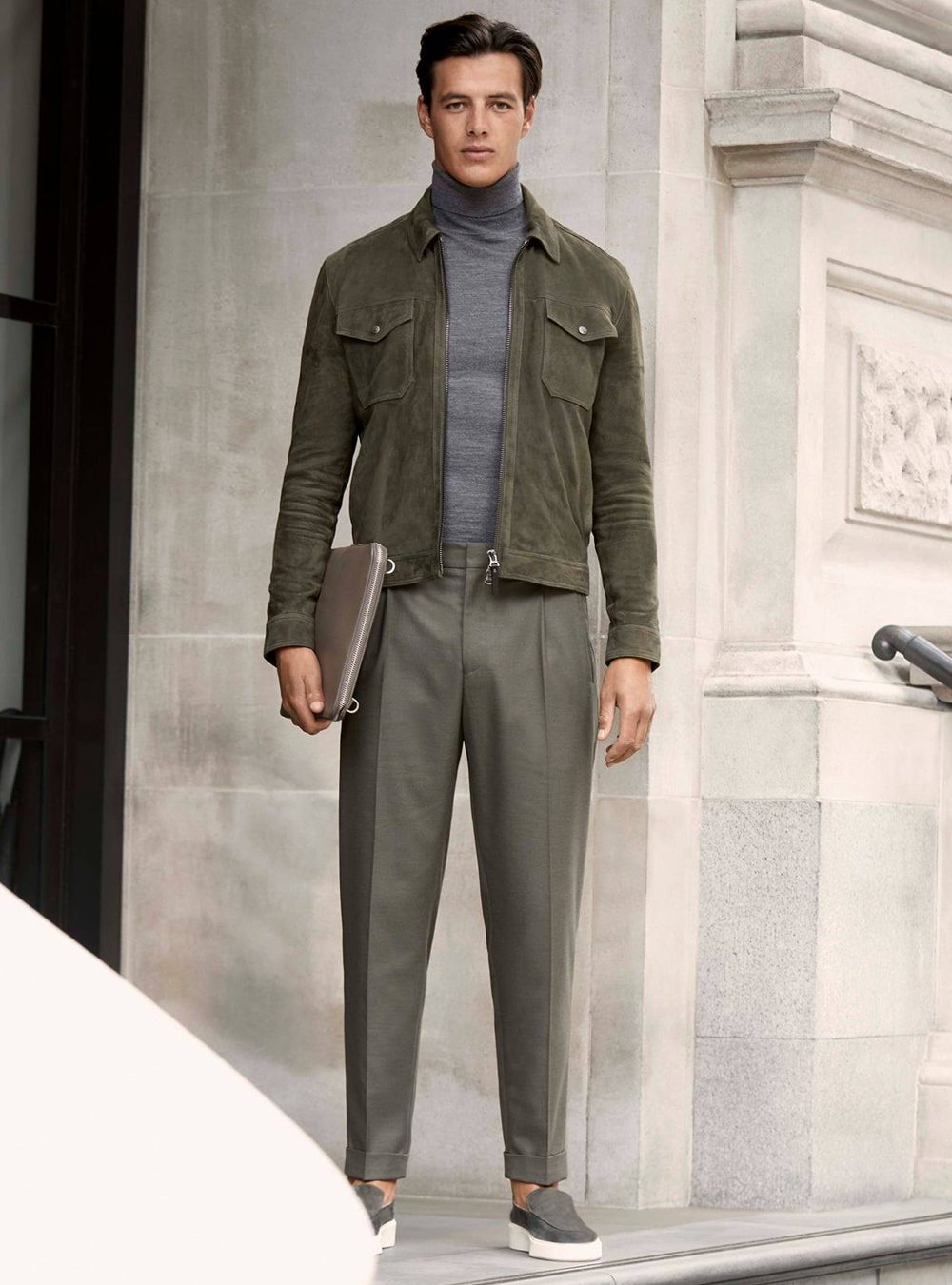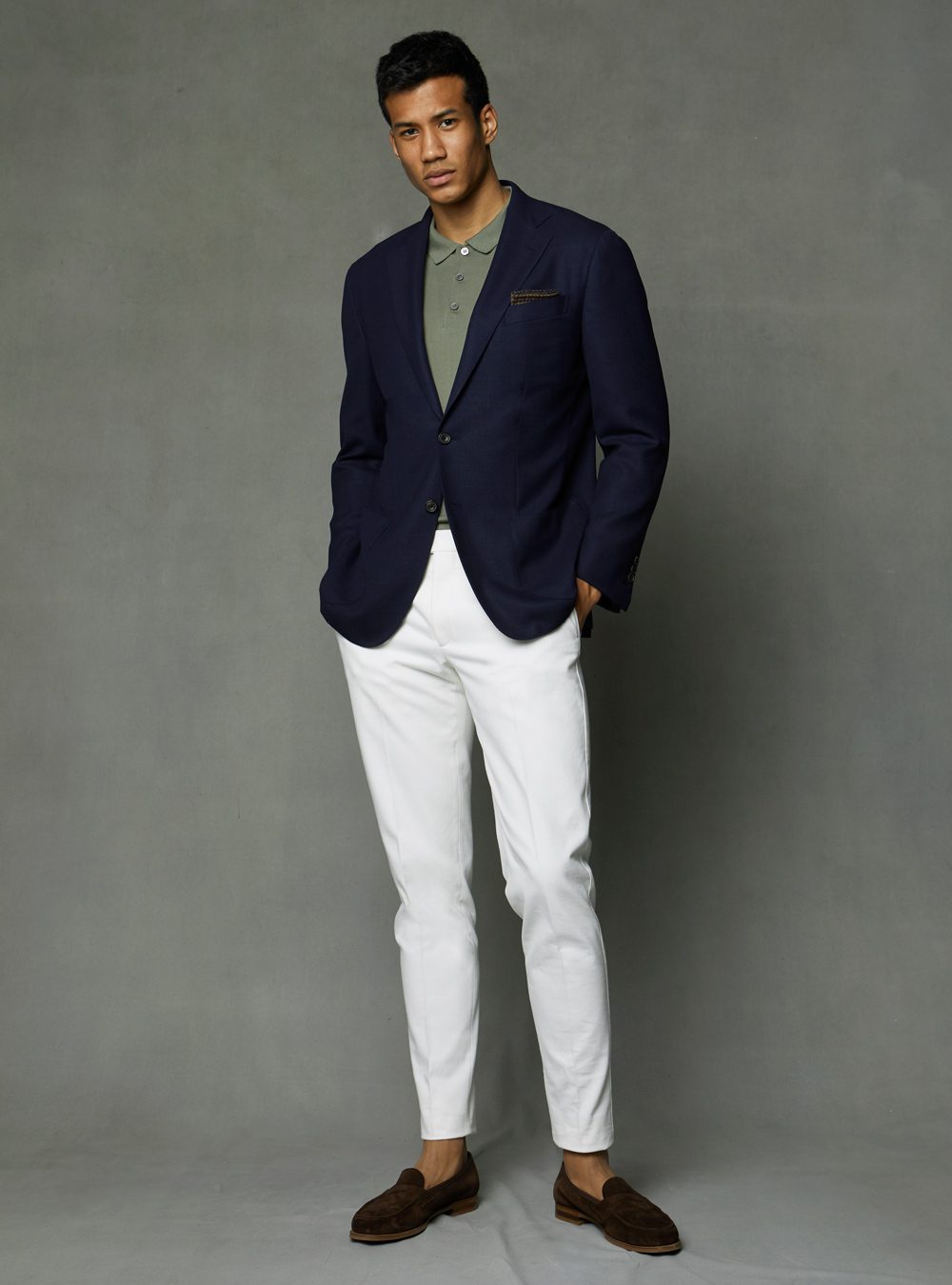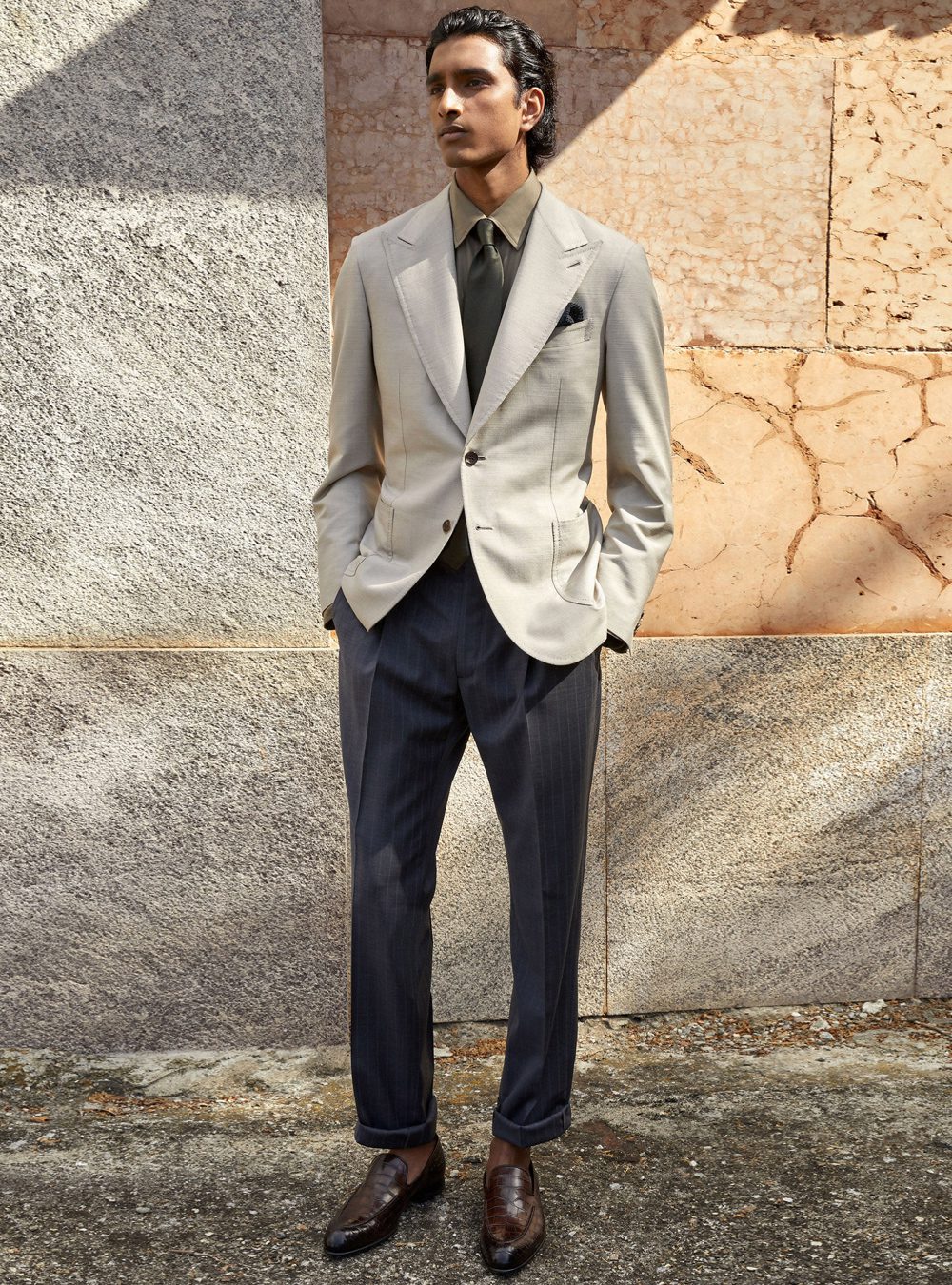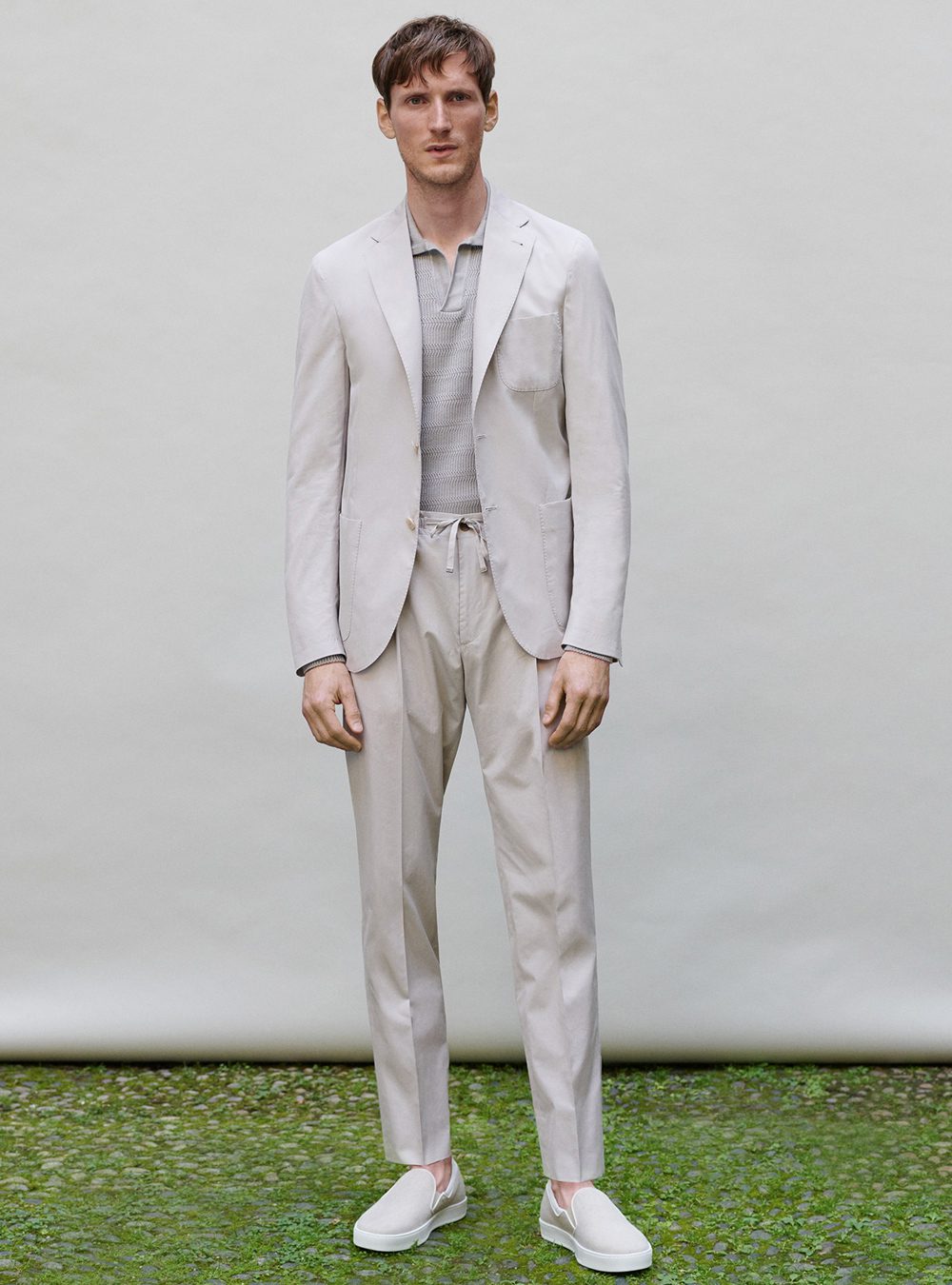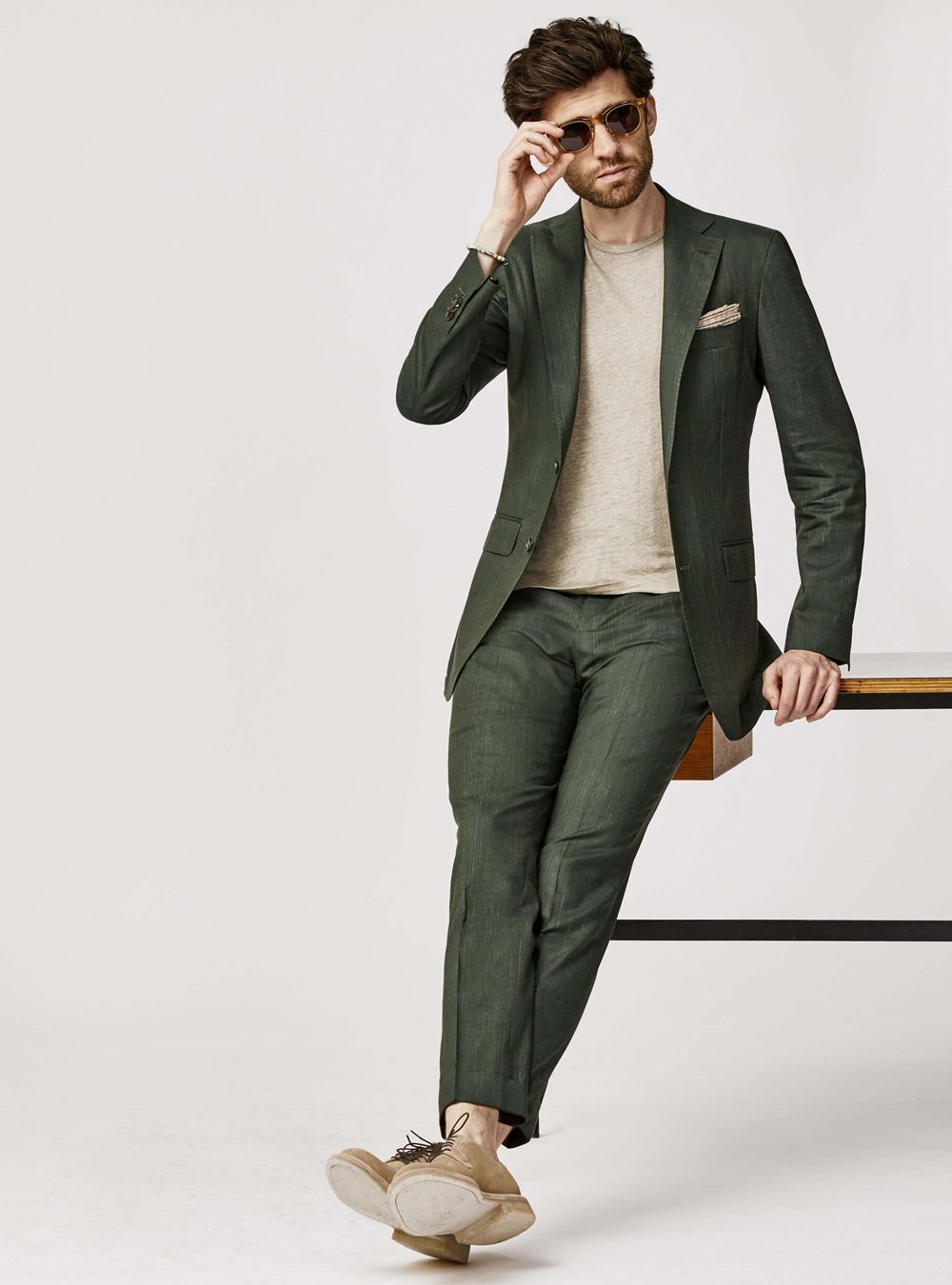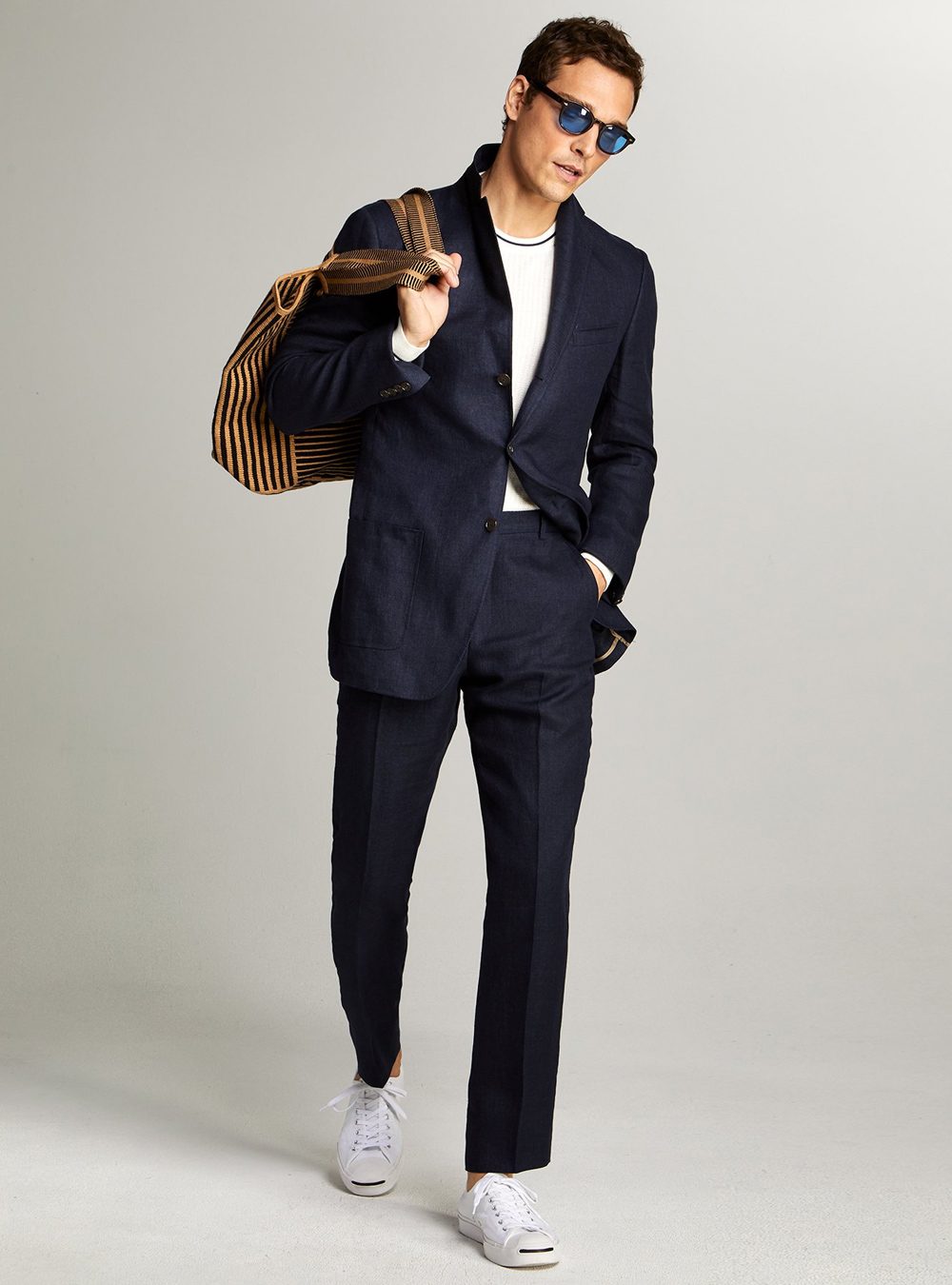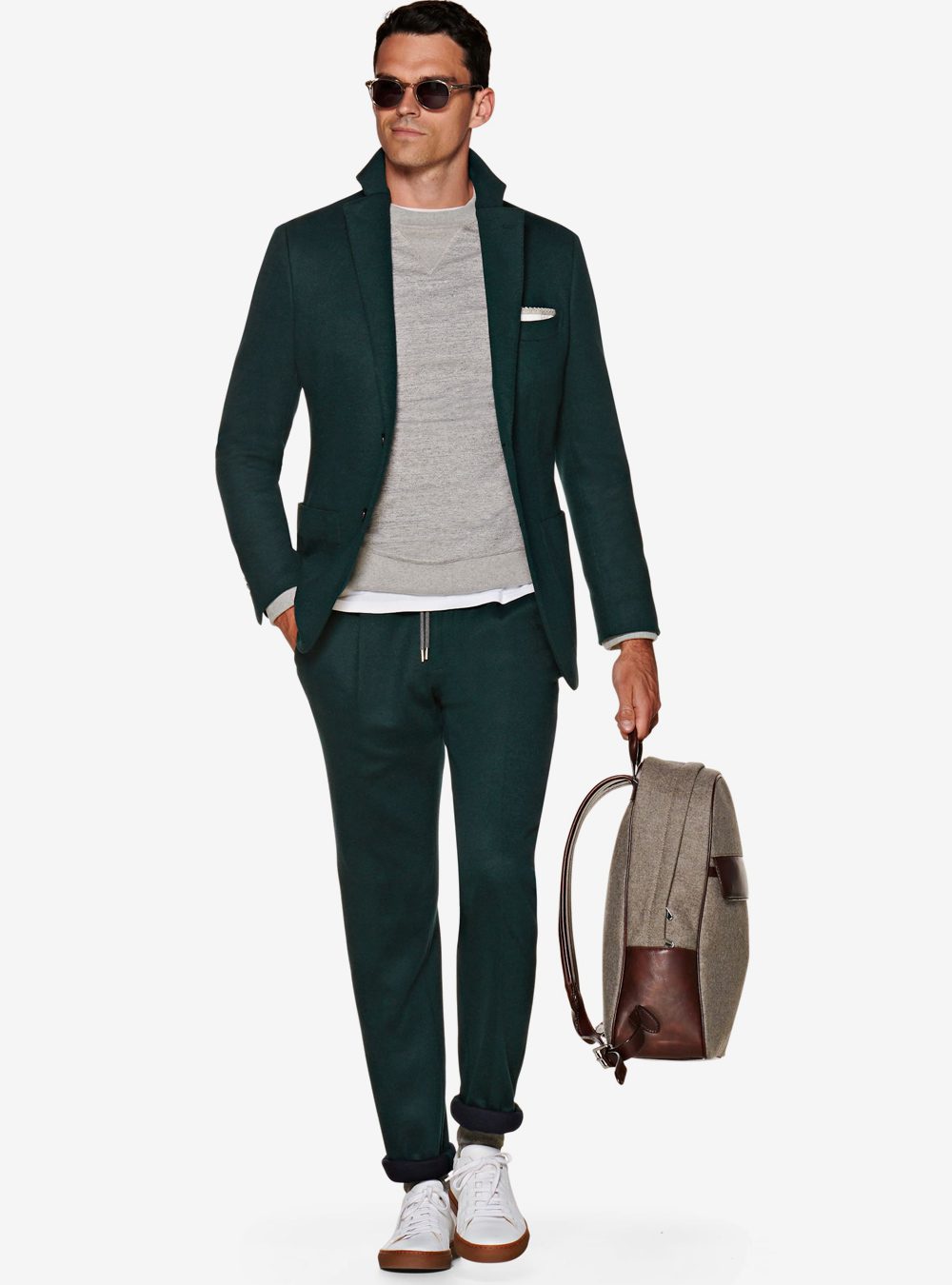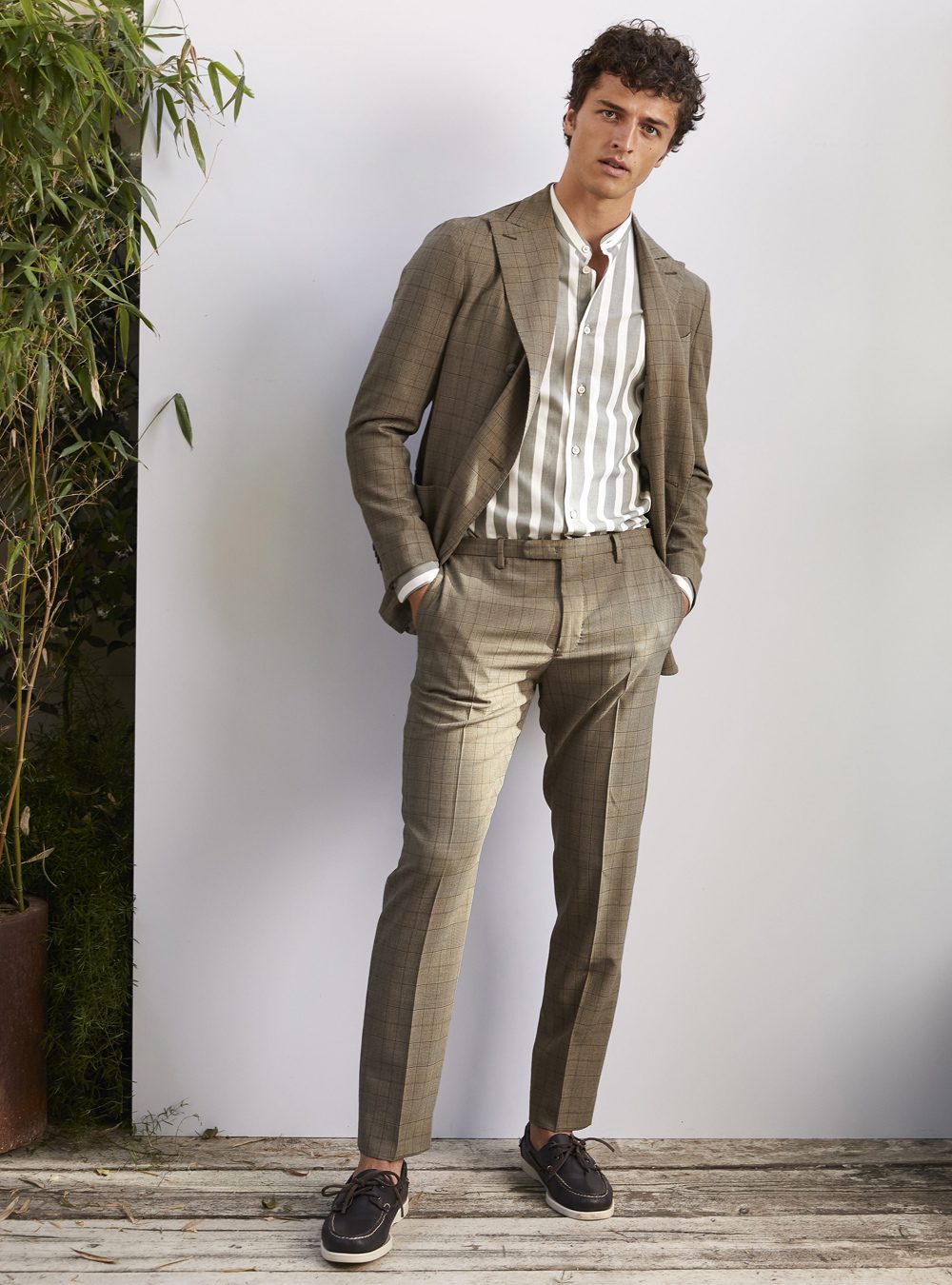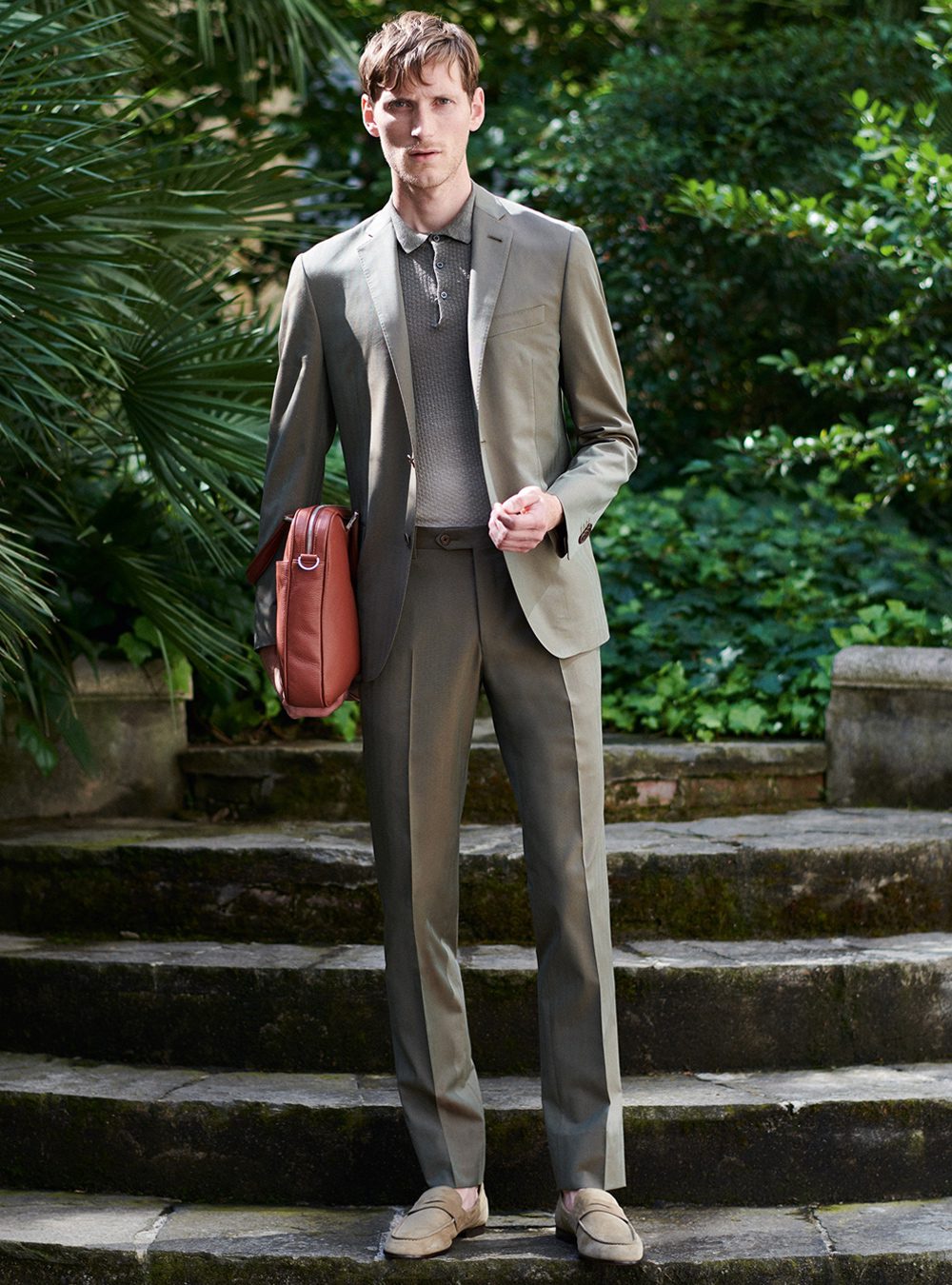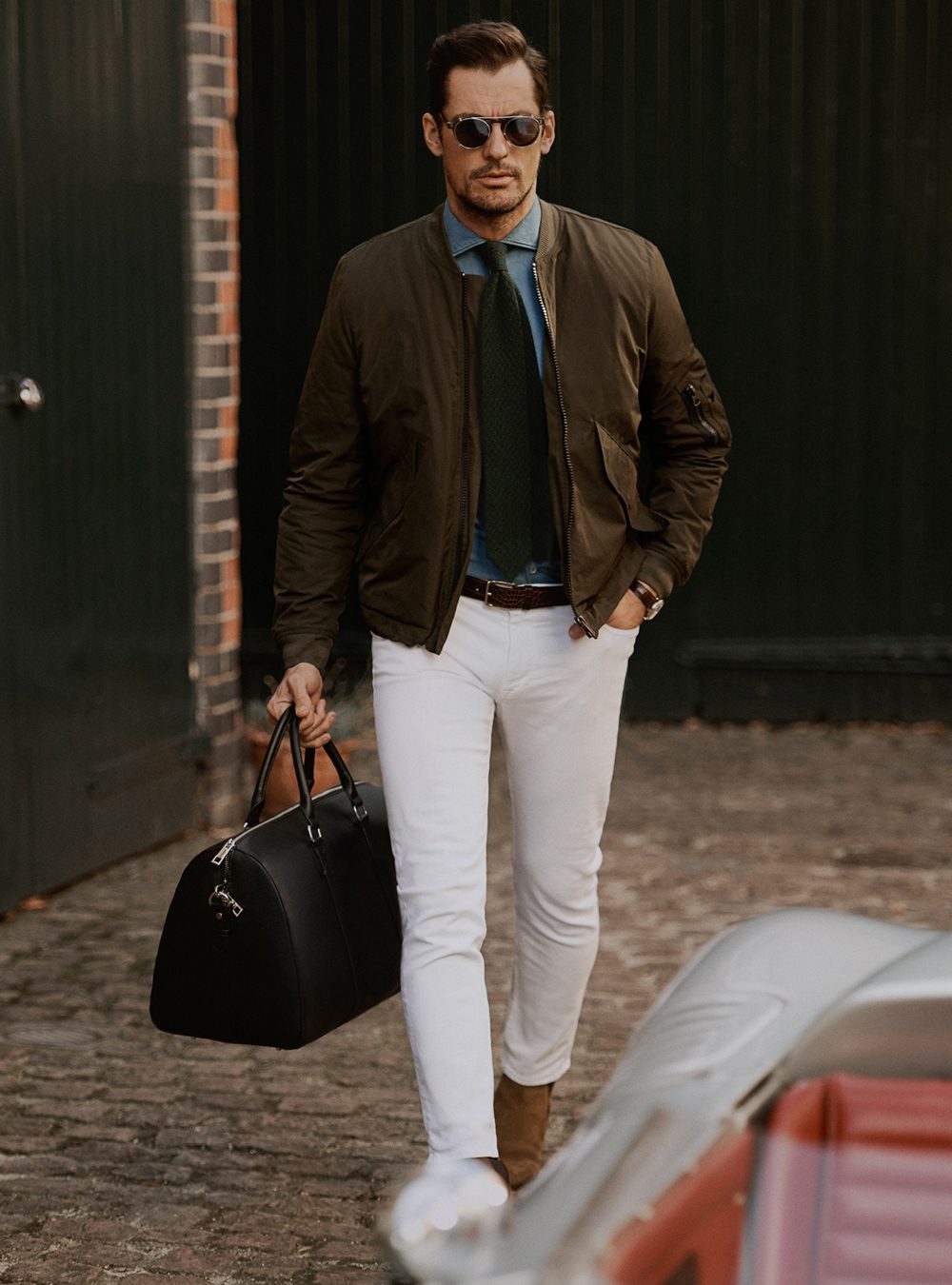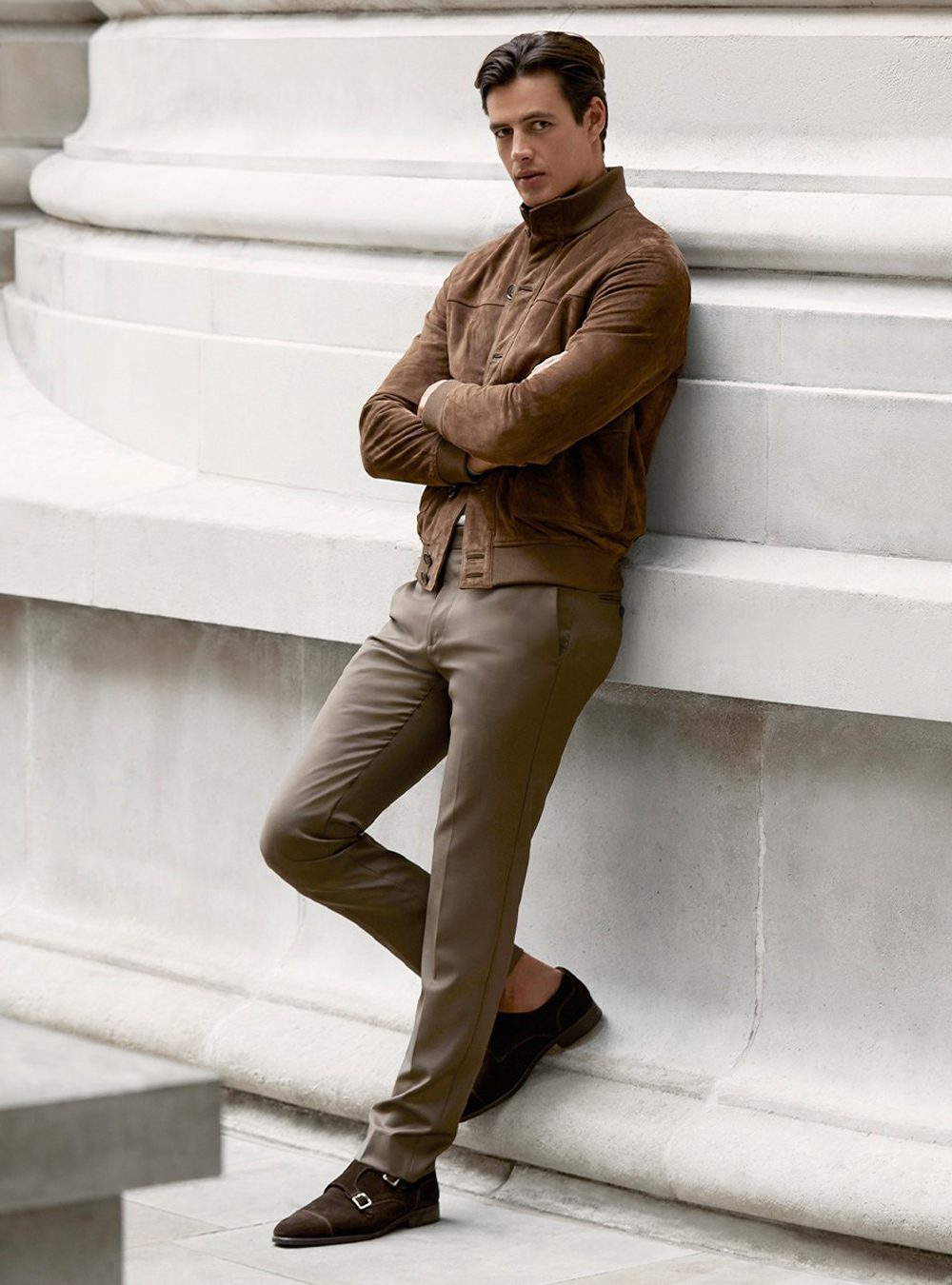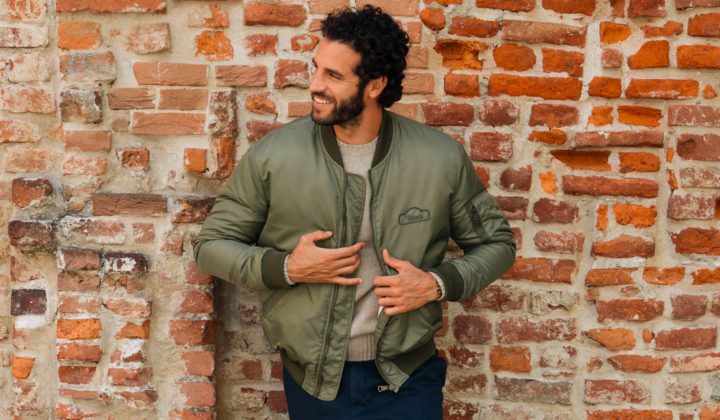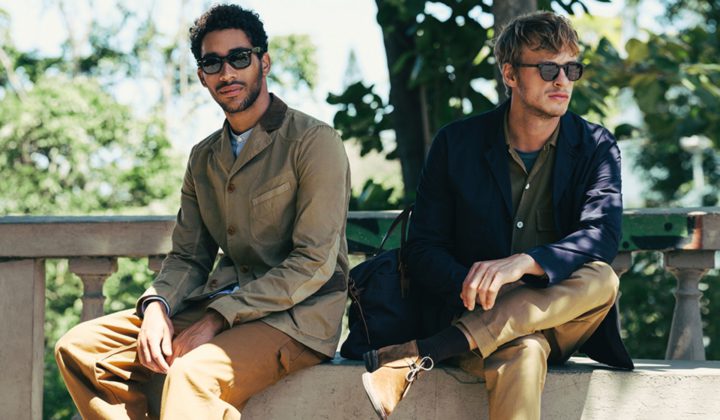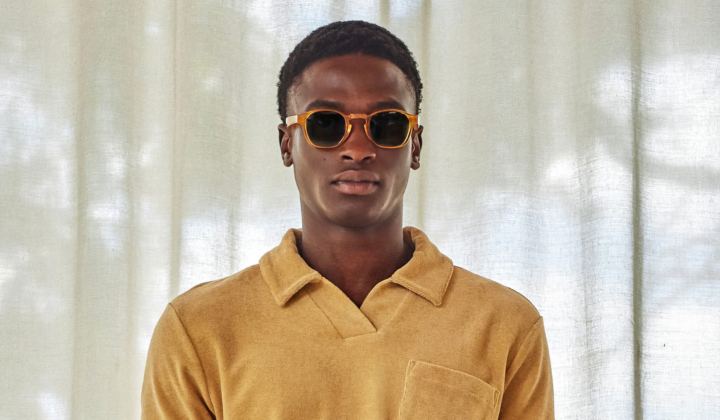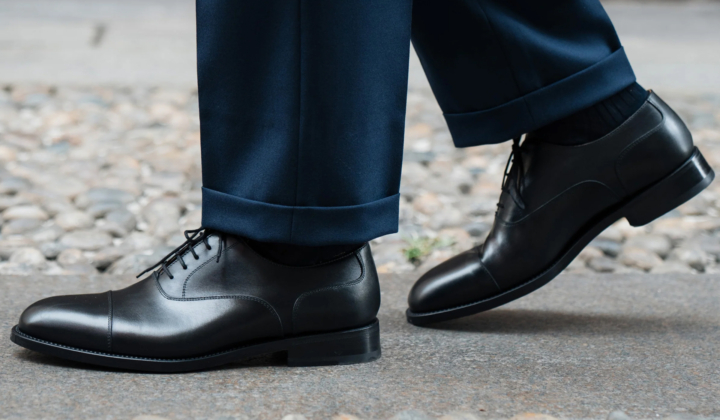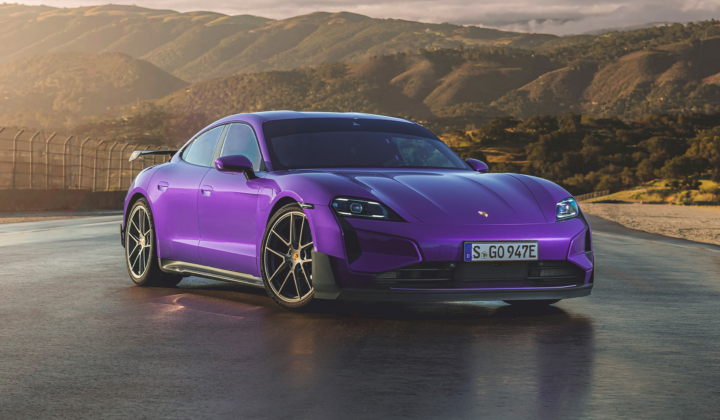Business Casual Dress Code: A Modern Man’s Guide For 2024
Ah, business casual, one of the style world’s great oxymorons and a thorn in the side of anyone forced to try to dress for it. Although not quite as confusing as its cousin, smart casual, this is a dress code that, on face value at least, simply doesn’t make sense. ‘Business’, after all, implies formality, and ‘casual’ the complete opposite.
So what exactly happens when you put the two words together? And how should you interpret a dress code which, for many, is stuck in the past? Let’s touch base, peel the onion, give 110% and circle back to make sure everyone is on the same page.
What Is Business Casual?
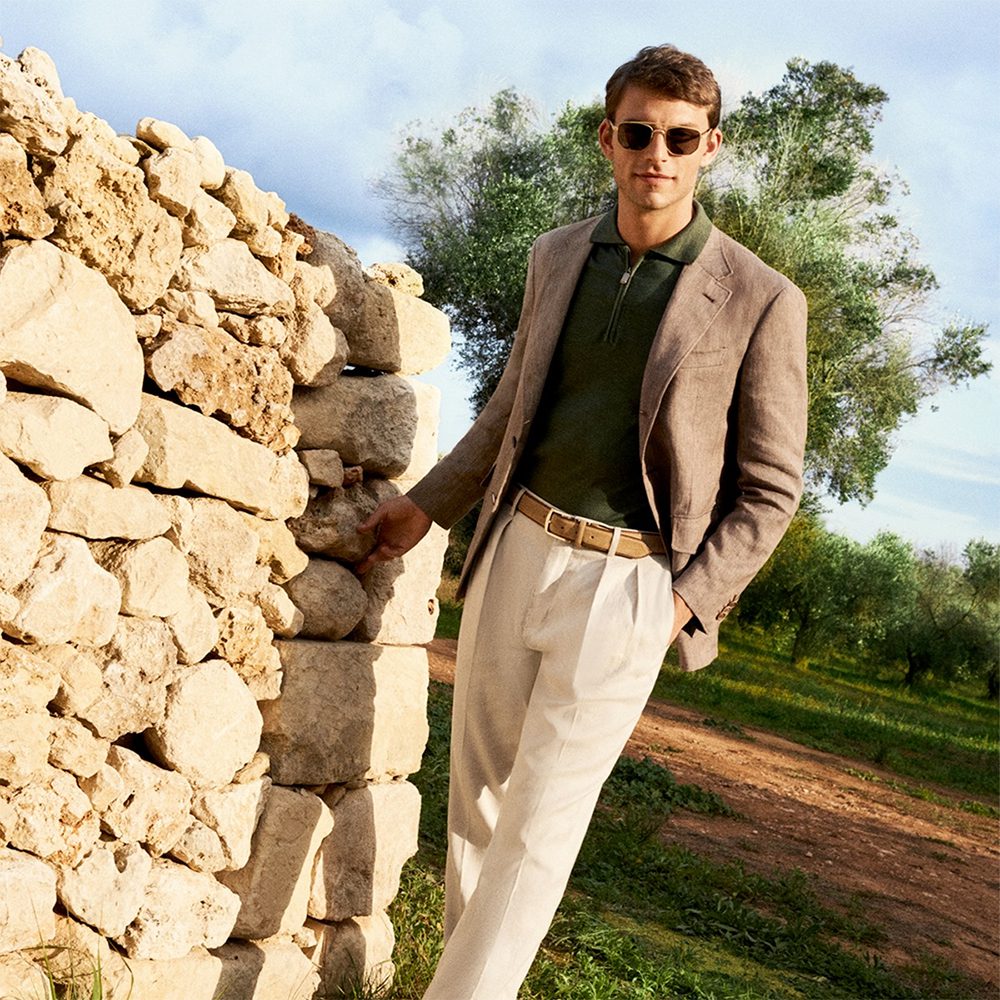
Modern business casual summer look, courtesy of Canali
In simple terms, business casual is a dress code often imposed upon office workers and professionals. It requires the individual to wear clothes that are more contemporary and less rigid than the traditional, old-school office attire of a suit, shirt and tie, while still looking professional and appropriate for work. In short, business casual is all about smart, tailored clothing worn in a way that is slightly more laid back.
For some workplaces that might mean wearing an unstructured suit with a shirt and no tie; for others, it might mean wearing a shirt tucked into chinos with Derbies. Unfortunately, and similarly to smart casual, there is no one way to dress business casual. There are numerous variations and approaches, and how smart you go ultimately depends on where exactly you work.
If, for example, you work in finance at a big office in the city, business casual dress is likely to be more formal than if you work in a corporate role in media or tech. But one thing is for sure – you should combine traditionally smart clothing with items that are more relaxed. Which, of course, is easier said than done.
History Of Business Casual
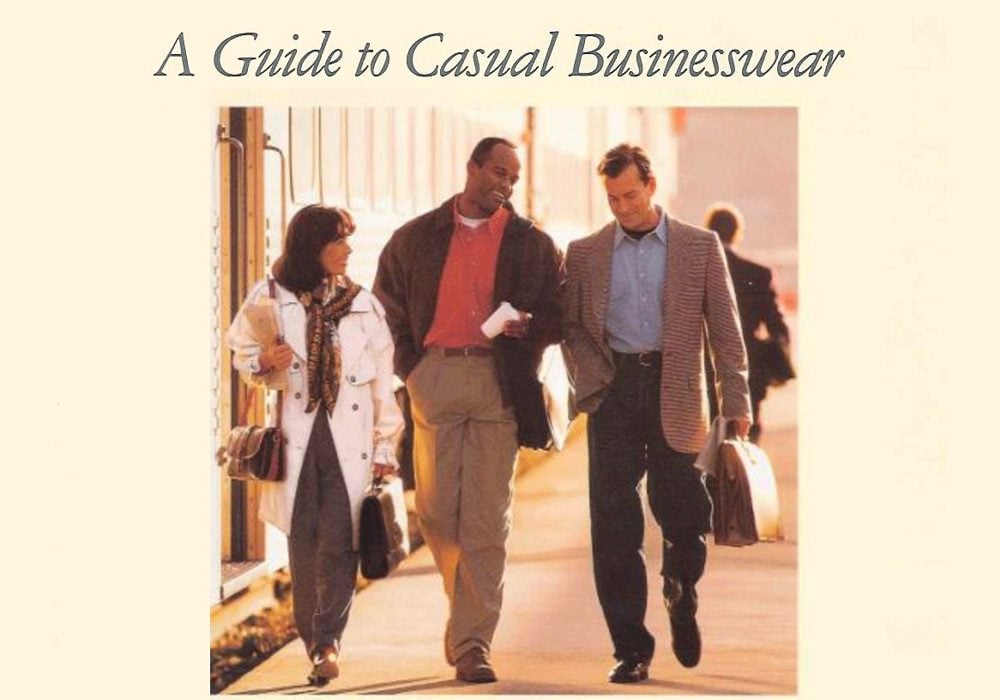
Business casual is a relatively recent phenomenon. It came about in the 80s and 90s in America and coincided with ‘casual Friday’ policies, which were at their peak in the late 90s and 2000s. Casual Friday was said to be inspired by Aloha Friday, a Hawaiian tradition that started in the late 60s, which saw office goers wearing Hawaiian shirts on certain Fridays throughout the summer months.
Pinning it down further, it’s thought business casual began specifically in Silicon Valley. Per The Atlantic, “restrictive clothing worn for appearances” sake was inefficient, and Silicon Valley was all about efficiency. Sport coat? Put it on the back of the chair.
Silicon Valley was at the forefront of the modern business casual movement
Places such as Atari, Apple and Sun Microsystems embraced the 80-hour workweek, and their clothes proved it. The cover of 1983’s humorous The Official Silicon Valley Guy Handbook showed the world what geek chic looked like: “an unkempt corduroy jacket,” “drab 100% cotton shirt,” and “econo-brand athletic sneakers.” Given that hoodies and retro sneakers are now worn in boardrooms of some of the most influential businesses on the planet, those tech pioneers impacted the way we dress just as much as the tech we now rely on.
What Business Casual Means Today
You could argued that business casual was the beginning of a slouchification of fashion. From the 1920s through to the end of the 70s, it was a requirement for office workers to dress smart. But when business casual dress codes gained momentum in the 80s and 90s, and casual Friday became the norm, society subtly began to shift and people realised they could work just as hard without starched collars, double-breasted jackets and polished Oxford shoes.
According to American business magazine Inc, “the Society for Human Resource Management [reported that] 95% of U.S. companies had some sort of casual day policy in place in 1999, compared to 24% in 1992. In fact, casual clothing manufacturer Levi Strauss claimed that 75% of American workers dressed casually every day in 1999, compared to 7% in 1992.”
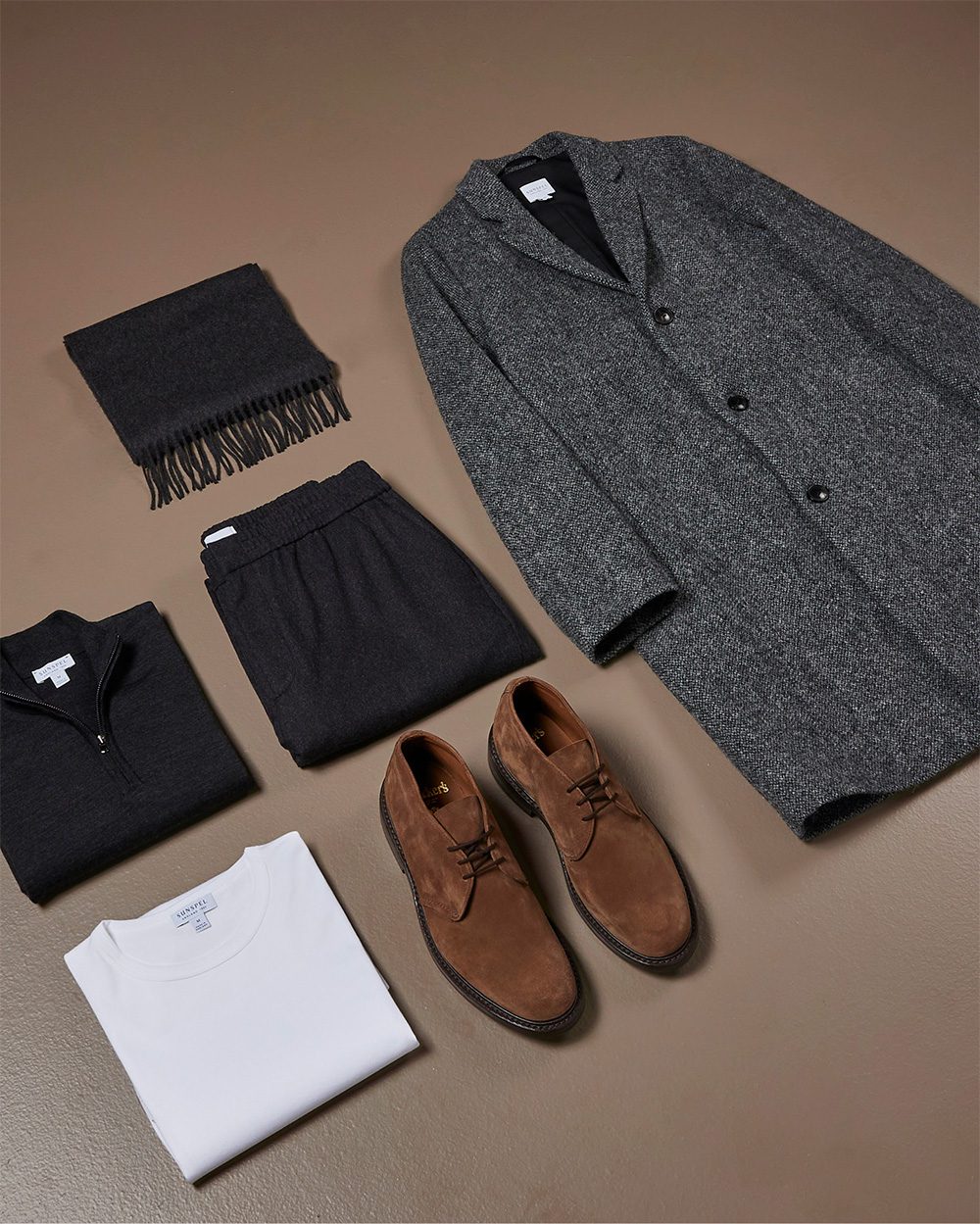
Sunspel
In the last decade or so, less formal clothing has become even more prominent in western office culture, with business casual dress becoming reserved for only the most formal of offices. Government buildings in the UK no longer mandate the wearing of a tie and even Goldman Sachs brought in a flexible new dress code in 2019. And that was before the COVID-19 pandemic.
Today, with remote working the norm for many, officewear as a whole has largely become defunct. There’s simply no need for people to wear business casual dress in the comfort of their own home. Tailored trousers and loafers have given way to sweatpants and slippers, and even for important video calls someone is more likely to throw on a T-shirt or polo than they are a button-down shirt and jacket.
This all begs the question of whether business casual is even necessary today. Do we need it in a time where (from a style perspective) comfort takes precedence over virtually everything else? Well, it won’t ever be completely dead. There will always be important meetings that require some form of professional dress; and there’ll always be that conference or work function where attendees are required to look presentable. So how do you go about dressing business casual today?
Business Casual Styling Tips
Swap The Blazer
- Hackett London
- Suitsupply
Business casual dress doesn’t have to mean you wear a formal jacket. Keep the bottom half smart with chinos and leather shoes and blaze a trail by swapping out the tailoring for a lightweight jacket instead. Think classic styles such as bombers, fields and Harringtons and wear them over an Oxford shirt for a failsafe look that’s suited to a wide range of semi-formal occasions.
Elasticate Your Trousers
- Brunello Cucinelli
- Ralph Lauren Purple Label
Fixed waistbands are a thing of the past as smart yet elasticated trousers are now widely available from high street to high-end brands. The trouser of choice for those who value comfort as much as they do style, drawstring pants are the answer if you want to feel as though you’re still wearing those WFH sweatpants. Simply wear them as you would a pair of chinos, and you can’t go wrong.
Switch Up Your Shirt
- Suitsupply
- Canali
In the past, business casual meant sticking to the plain white or pale blue shirt you’d usually wear with a suit. Today though you can easily get away with wearing something more stylish and far comfier. Look out for denim or chambray shirts which can be just as smart yet way cooler, especially when tucked into the aforementioned drawstring trousers.
Go With Separates
- Reiss
- Atelier Munro
If you’re required to wear tailoring for your business casual dress code, avoid a matching suit and opt for separates. Less formal and arguably more stylish, separates offer plenty of ways to get creative. Opt for complementary tones of blues, browns and neutrals and you’ll be on the right track. A navy blazer worn over a light blue Oxford shirt and brown tailored trousers is a classic look and one that’ll make you the best-dressed in the room.
Choose Your Bag Wisely
- Mismo
Bags can make or break a look. The wrong bag can undo all your hard work, so don’t forget this often overlooked accessory. For some business casual circles, a minimal backpack is entirely appropriate – look out for one crafted from leather, which’ll give it a luxe, high-end feel. For something slightly smarter, a good quality tote or soft briefcase would work perfectly; just make sure the colours are simple and dark – black, grey or navy are best.
Don’t Forget (The Right) Shoes
- Luca Faloni
- Massimo Dutti
For traditional offices, shiny black or brown Oxfords or Derbies are pretty much the only choices. But for casual dress, the options are far more varied. Desert boots, Chelsea boots and loafers are all solid business casual shoe choices and incredibly versatile, while you can’t go wrong with chunky-soled Derbies, which give a more contemporary look and feel than their thinner-soled counterparts.
Don’t overlook sneakers either. While not always appropriate, a pair of clean, minimal sneakers can dress down an otherwise smart look.
Upgrade Your Watch
- Rolex Oyster Perpetual
A sleek dress watch can jazz up laid-back looks. It can also be the cherry on the top of the business casual cake. Look for something simple in design and with a small case size of between 34-40mm and it’ll say you mean business without shouting from the rooftops.
Key Business Casual Pieces
Unstructured Blazer
- L’Estrange The 24 Blazer
- Thom Sweeney Cashmere Uunstructured Single Breasted Jacket
- MR P. Garment-Dyed Cotton-Blend Twill Blazer
- Velasca Zugnoli
The basis of many a business casual look, an unstructured blazer is your key to looking professional while remaining comfortable. Far superior in comfort to a regular suit jacket, its natural shoulders and lack of padding ensures it’ll feel more like a cardigan than a blazer, yet it still looks just as good as the sharpest Savile Row number.
Drawstring Trousers
- Thom Sweeney Cotton Twill Drawstring Tailored Trousers
- Closed Vigo Tapered
- SIRPLUS Navy Pinstripe Wool Drawstring TRrousers
- Private White V.C. The Flannel Flanneur Trouser
Similarly, drawstring trousers feel like you’re wearing sweatpants with their elasticated waist, but they retain the look of traditional tailored trousers or chinos. Once you try them it’ll be hard to go back to a classic fixed waistband, such is their superior comfort and convenience. Treat them as you would a regular pair of trousers and opt for some in navy, dark brown or stone.
Oxford Shirt
- Billy Reid Arnie Oxford Shirt
- L’Estrange London The All Day Oxford Shirt
- ASKET The Oxford Shirt
- Thom Sweeney Heavy Cotton Casual Button Down Oxford Shirt
The smart casual king, an Oxford cloth button-down shirt is the go-anywhere, do-anything shirt. Wear it tucked into trousers and a tailored jacket or combine it with dark jeans and boots and it’ll look just as at home. If you’re going to buy just one shirt for your business casual needs, this should be the one.
Polo Shirt
- Aurelien Extrafine Merino Polo Dark Grey
- Thom Sweeney Merino Wool Fine Gauge Long Sleeve Polo Shirt
- Billy Reid Pique Pensacola Polo
- Velasca La Salle
The polo shirt is a business casual OG. Favoured in the 80s and 90s casual Friday movement for its relaxed look and comfortable pique fabric, its sporty origins effortlessly dress down tailoring. Numerous variations on the classic polo are readily available today, but for something a bit fancier and with a touch of mid-century flair, opt for a knitted polo, which is smarter and more refined, particularly in a merino wool or cashmere blend.
Minimal Sneakers
- JAK Royal Grey
- Clae Bradley Essentials Black Milled Tumbled Leather
- Thom Sweeney Leather Sneakers
- Pini Parma Brown Luxury Sneakers
Back in the day you wouldn’t be seen dead in the office in a pair of sneakers. But such is the casualisation of the way we dress today that they’ve actually become the norm. A clean, white, minimally-designed pair offers up a contemporary way of dressing down a suit or separates.
Business Casual Outfit Ideas
Blazer And Jeans
Blazer and jeans is a classic business casual combination, and one that’s so easy to get wrong. Get it right though and it’s hard to beat. The trick is to invest in an unstructured blazer with plenty of texture to the fabric. Aim for tweed, herringbone or houndstooth wool and you’ll be on the right track. The last thing you want is to look like you’ve worn your regular suit jacket with denim.
- Angelo Nardelli
- Hackett
Colourful Suits
Let’s face it, tailoring is usually found in one of two colours: navy or grey. So when you’re looking to dress business casual, switch it up a little. Opt for colour with green, tan or off-whites, and you’ll have a suit that looks more laid back without the outdated banker connotations. Pair it with smart casual pieces like turtlenecks, sneakers and denim shirts to bring down the formality even further.
- Brunello Cucinelli
- Reiss
Knitted Jacket
One easy way to dress down your tailoring is to rethink your jacket. You can keep the rest of the look smart but by swapping out a blazer for a knitted jacket or shawl collar cardigan you’ll instantly look more relaxed and laid back, not to mention more comfortable.
- Bonobos
- Suitsupply
No Jacket
If you want to go a step further, lose the jacket entirely. A tailored pair of trousers combined with sharp black or brown leather shoes sets the foundations, ensuring you look smart and sophisticated even if you opt to forgo a blazer. Depending on the time of year, you can rock this look with an Oxford shirt or roll neck or, if it’s cold, finish with a wool overcoat.
- Canali
- Ralph Lauren
Patterned Tailoring
This is another easy way to bring down the formality of your day-to-day tailoring. Patterned suits are more fun and playful than solid colours, and add a point of interest to an otherwise pared-down look. Pattern doesn’t have to mean loud checks but it can be an easy way to inject colour. If you plan on being bold, keep the rest of the look simple and look for complementary colours. For example, wear a light blue shirt to pick out the light blue in your windowpane suit.
- Boglioli
- Corneliani
Roll Neck With Tailored Trousers
If you’re going to try any piece from this list, we’d suggest starting with the roll neck. A smart casual staple that’s as easy to wear with jeans as it is tailoring, the roll neck is a must for those wanting to look and feel sharp without being stuffy. Keep things simple and tuck it into tailored trousers for a clean, minimal look that’s appropriate for a wide range of social settings.
- Hackett London
- Reiss
Separates
Once you get into wearing separates, a regular suit just seems boring. Elegant and sophisticated, separates offer up plenty of creative ways to wear tailored clothing. The trick is to go for complementary shades and avoid contrasting too much. Keep it tonal and combine earthy shades of green, tan and brown, or go for the classic, Riviera-inspired combo of a navy blazer and white trousers.
- Thom Sweeney
- Brioni
Shirt Sub
A simple solution is to swap out your shirt for more casual pieces like T-shirts, polos, sweatshirts and hoodies. These relaxed staples add a laid-back edge to tailoring, but there’s a couple of pointers to take on board. 1) Only try this with unstructured tailoring as the juxtaposition is too harsh with more formal, structured suits. And 2) keep accessories to a minimum. Avoid loud pocket squares and belts, as they’re associated with formality; instead, keep the look as minimal and clean as possible.
- Corneliani
- Atelier Munro
Suits & Sneakers
Combining your suit with sneakers is incredibly tricky to pull off, but when it’s done well it’s arguably the perfect business casual combination for more creative industries. Again, you’ll want to keep everything as dressed down as possible. That means a soft-shouldered jacket, relatively slim trousers (ideally with a drawstring waist), and a T-shirt or knit instead of a shirt.
- Todd Snyder
- Suitsupply
Switch Your Collar
A subtle change but one that makes a big difference is switching up your shirt collar. Opt for something more casual like a knitted polo, a camp collar shirt or grandad collar, and you’ll instantly inject a more laidback feel into your tried and tested suit.
- Boglioli
- Corneliani
Upscale Casual
For a simple approach, try upgrading your existing casual staples. Go for laid back pieces in luxurious fabrics – think merino wool polos, suede bomber jackets, knitwear in cashmere and sneakers in high quality leather. This way, you can dress with pieces you’re already comfortable with while still looking sharp.
- Mango
- Reiss
